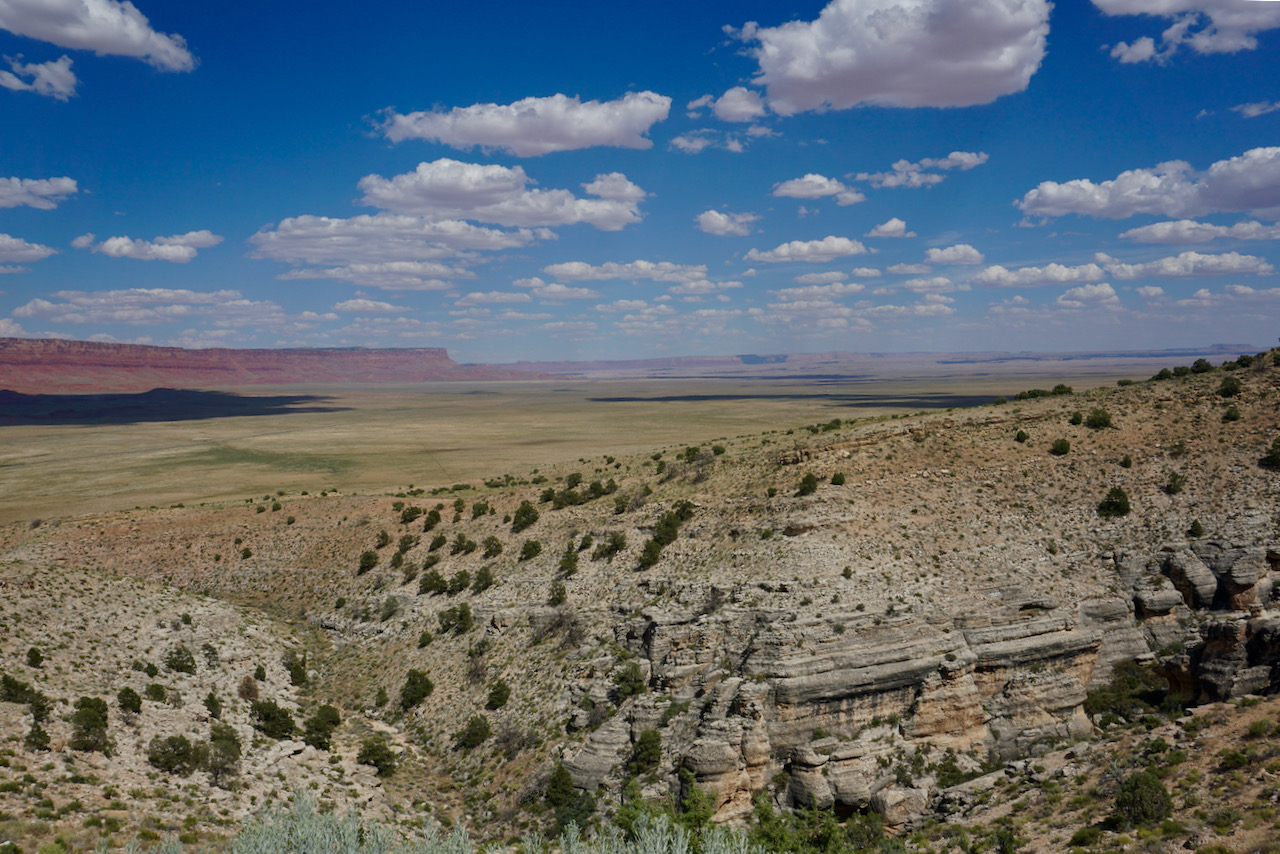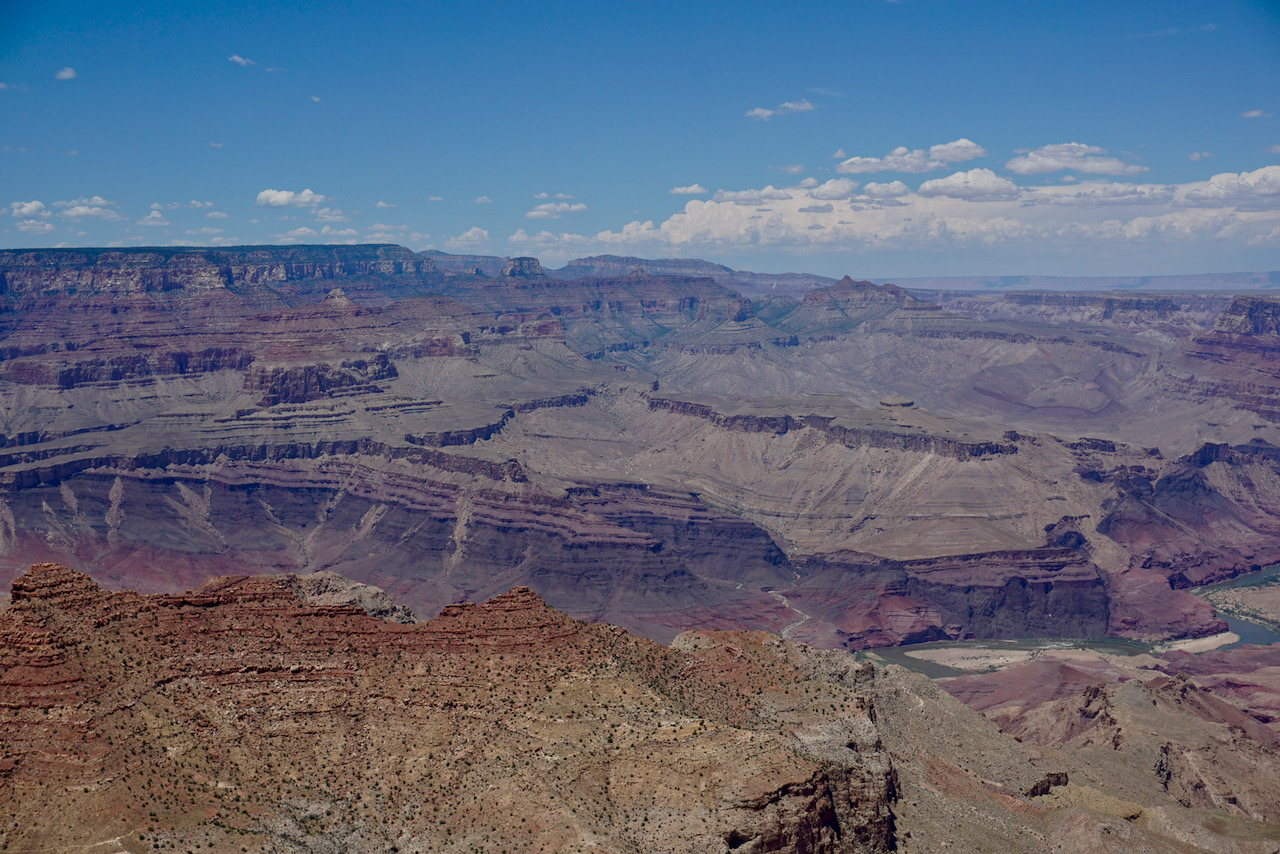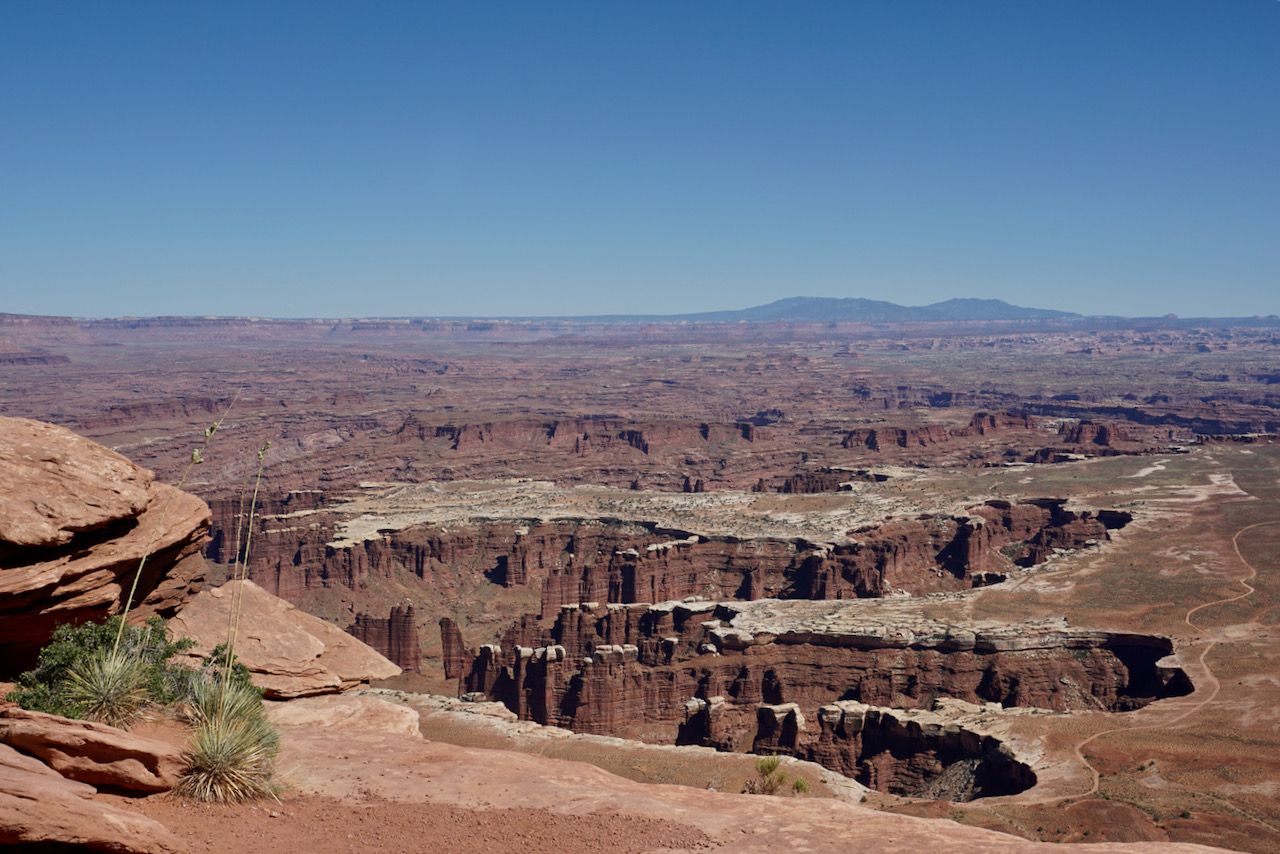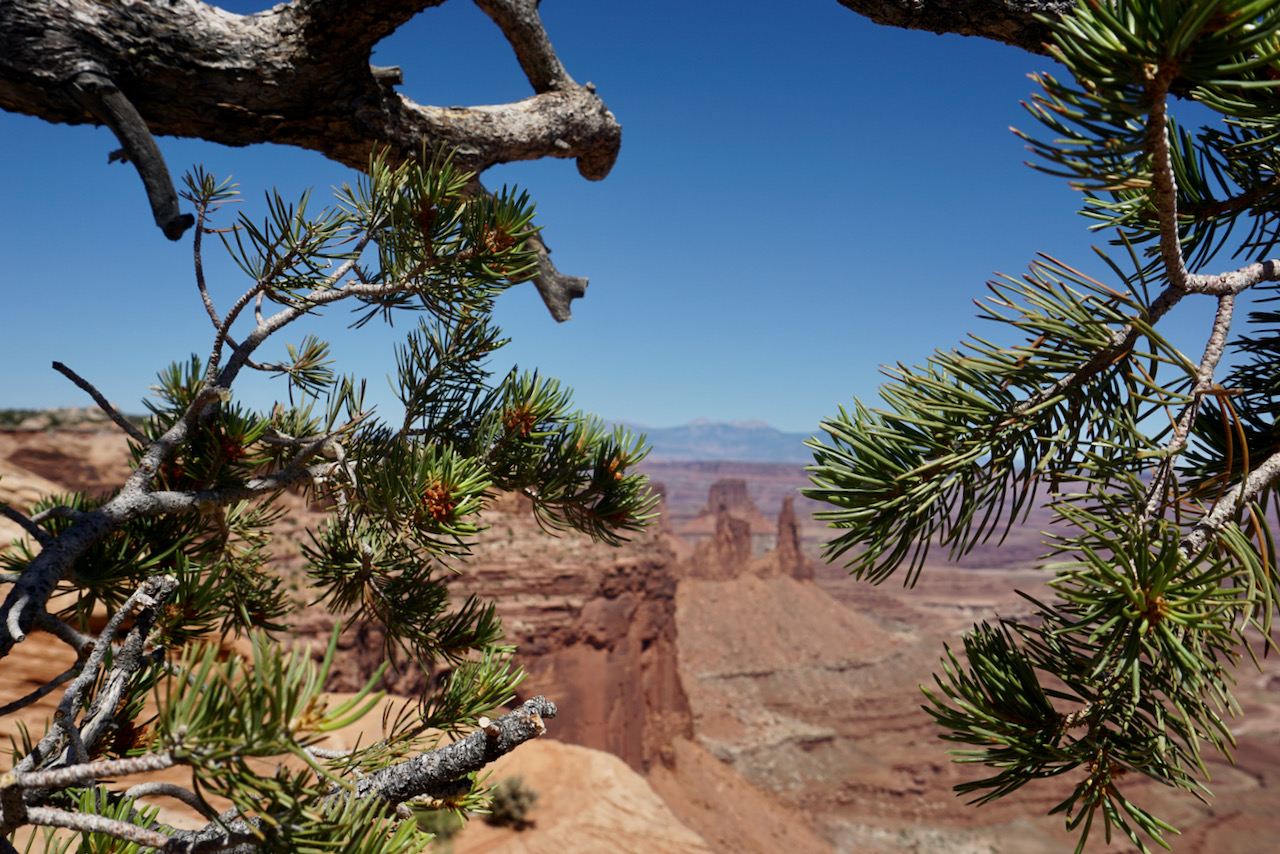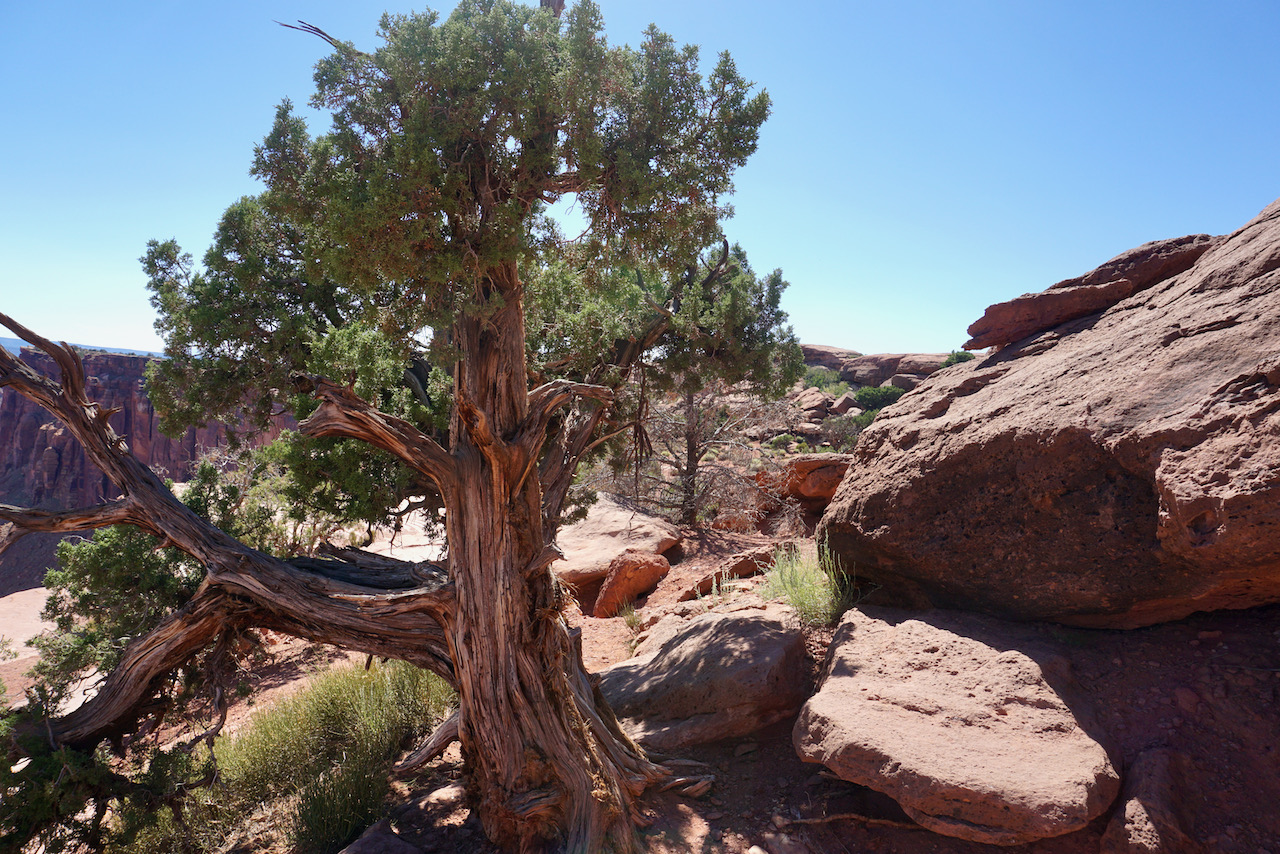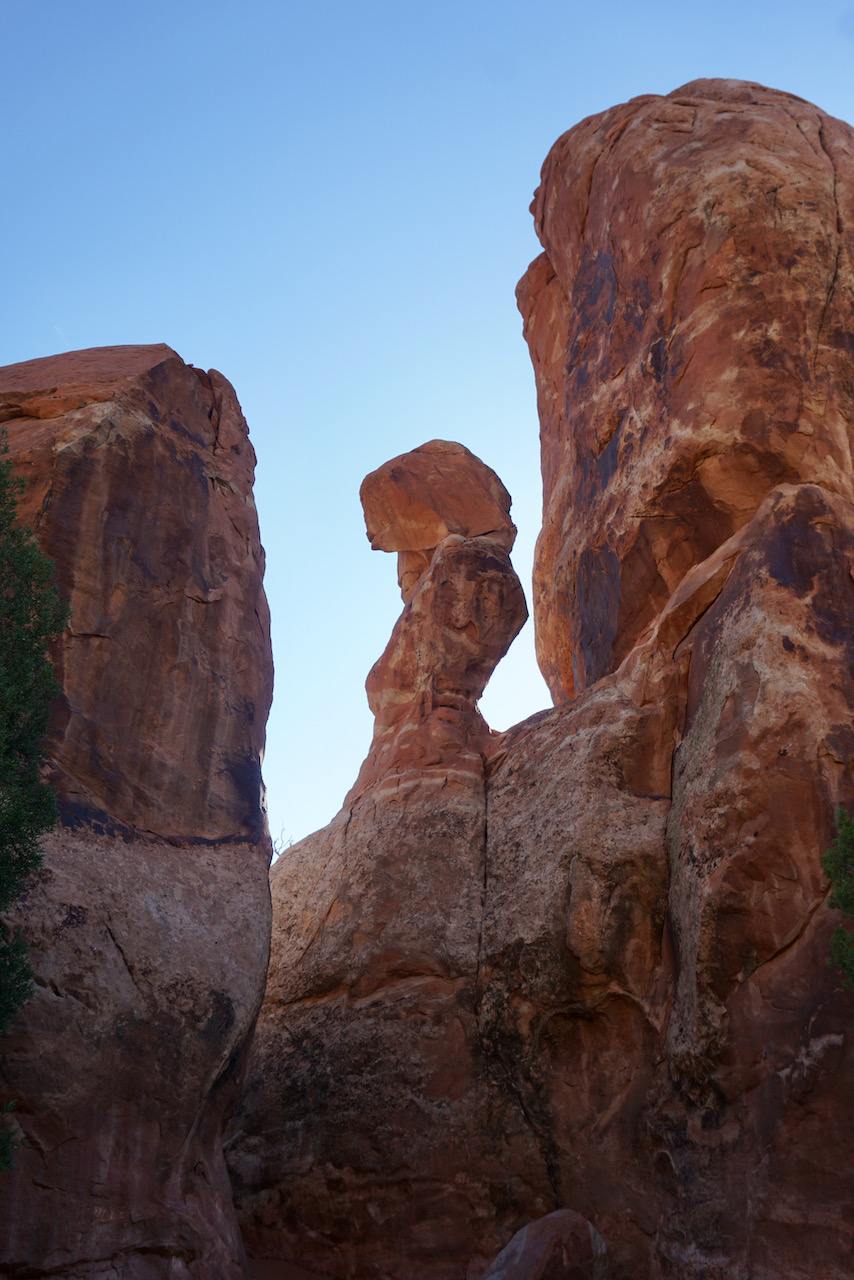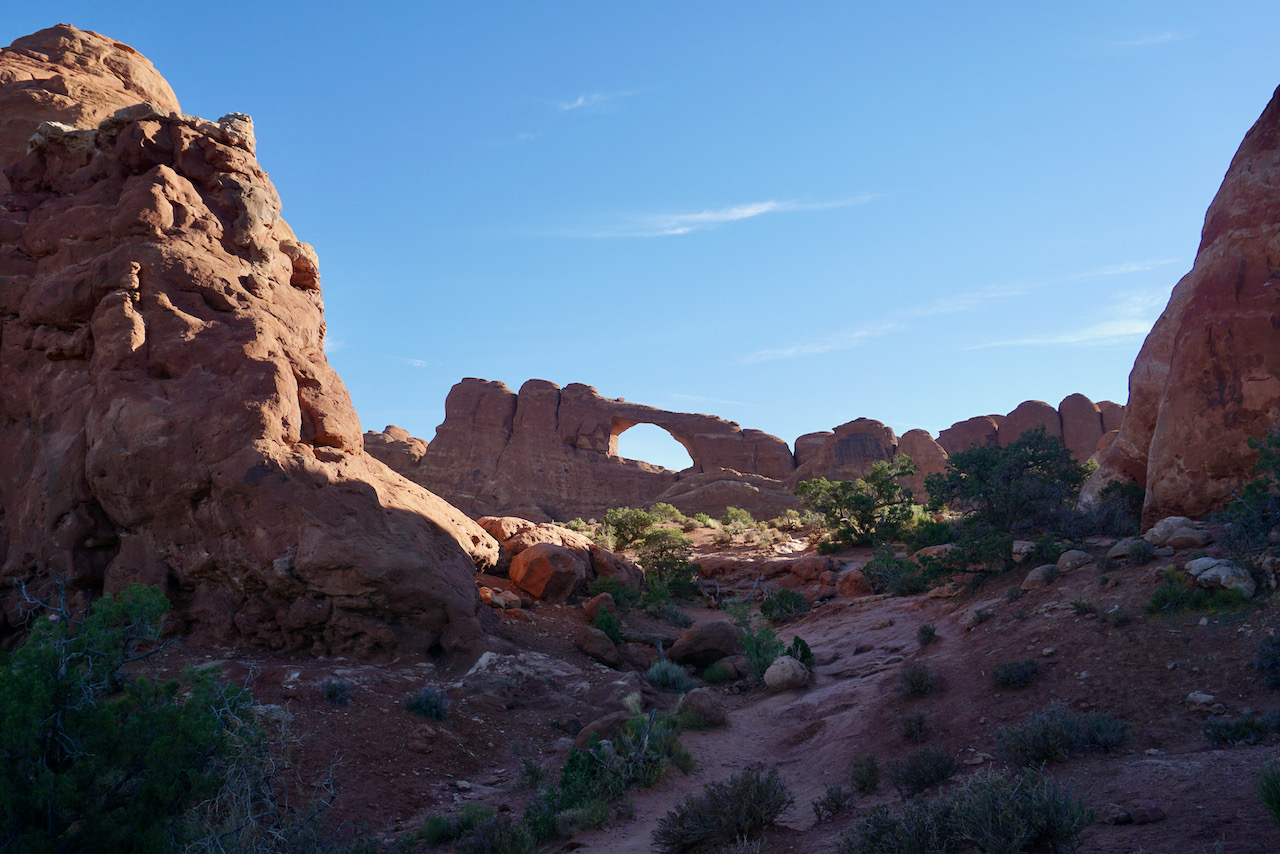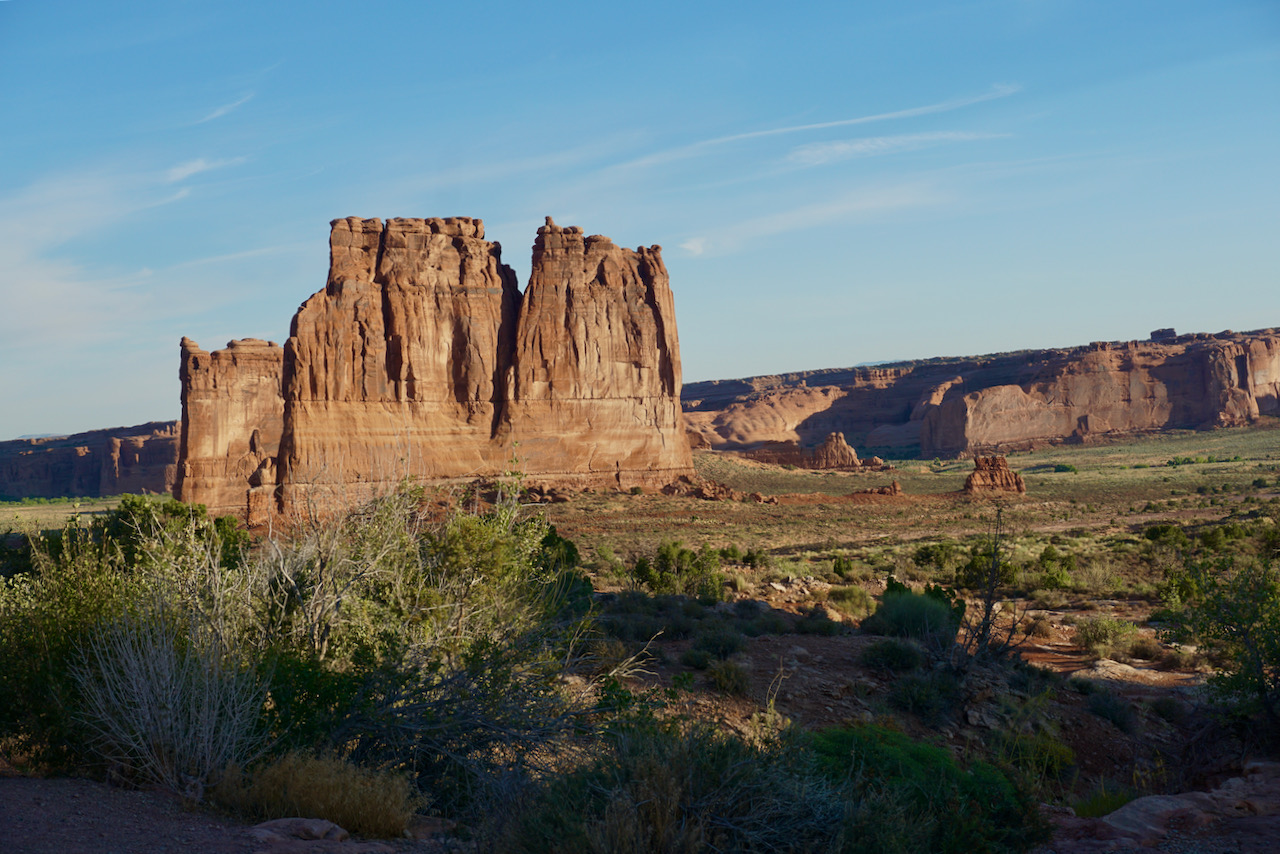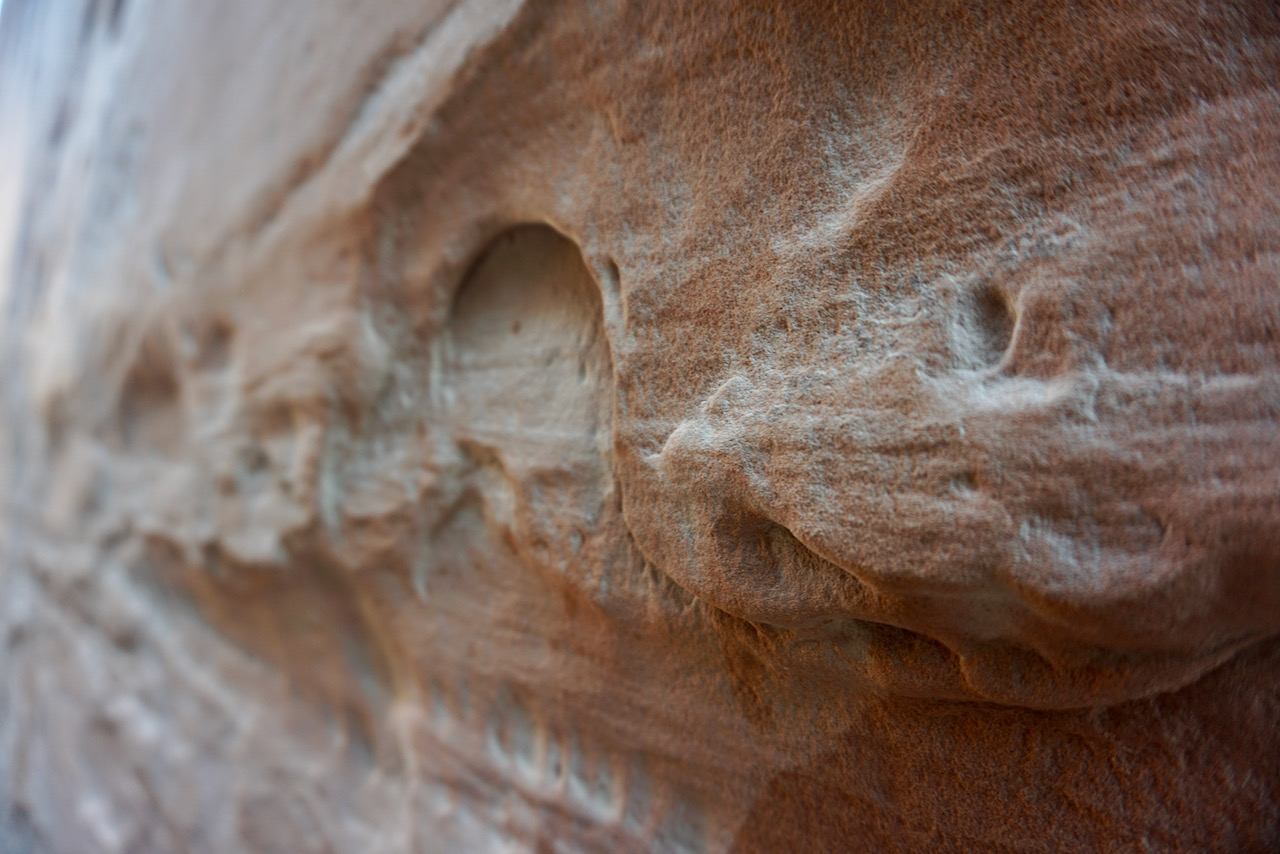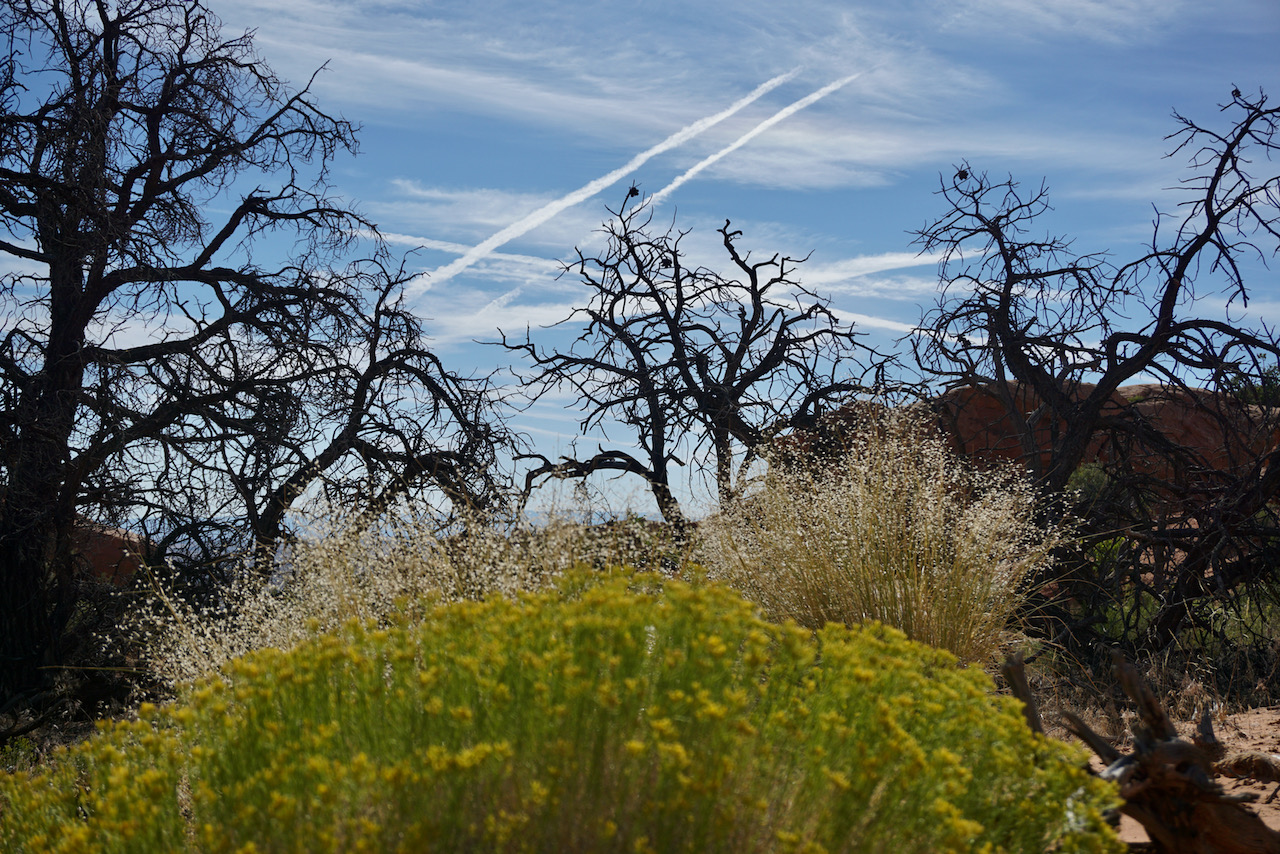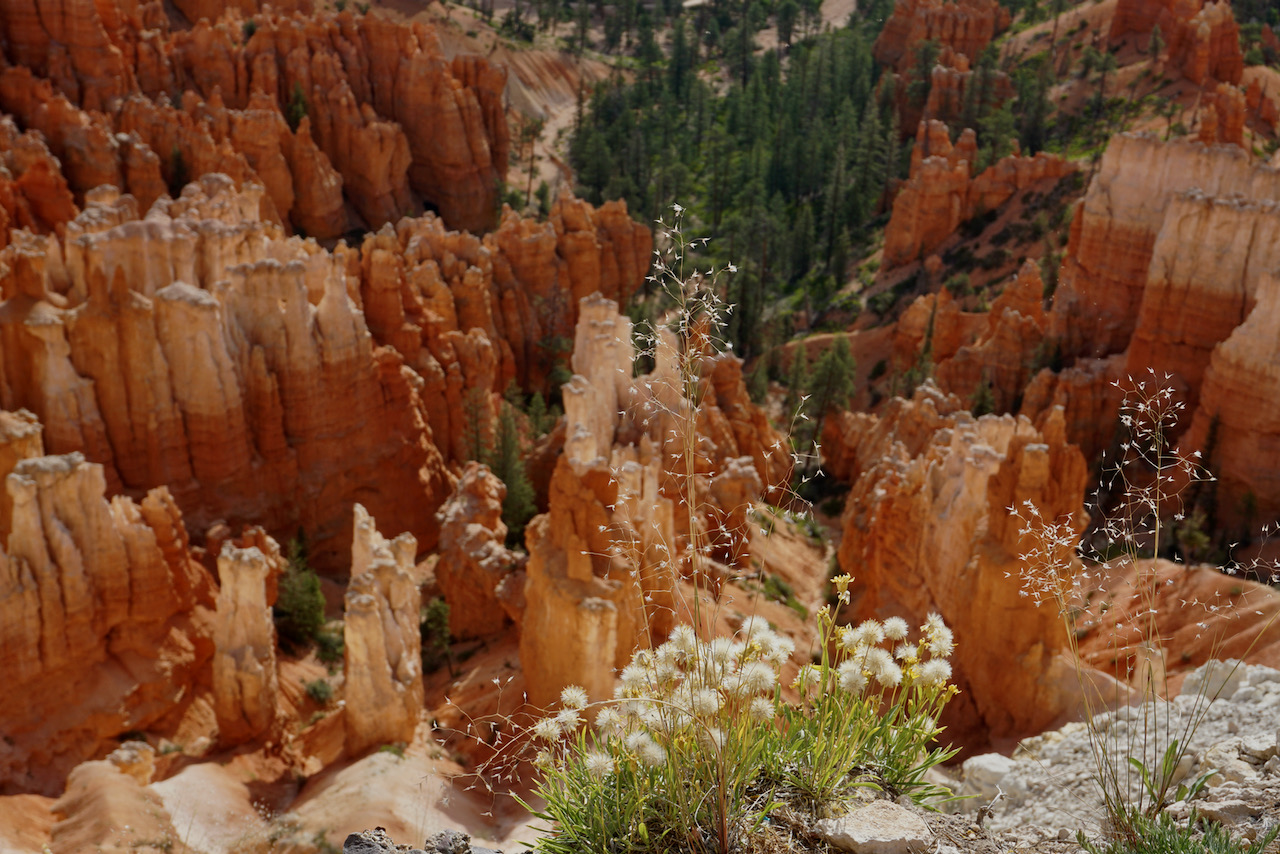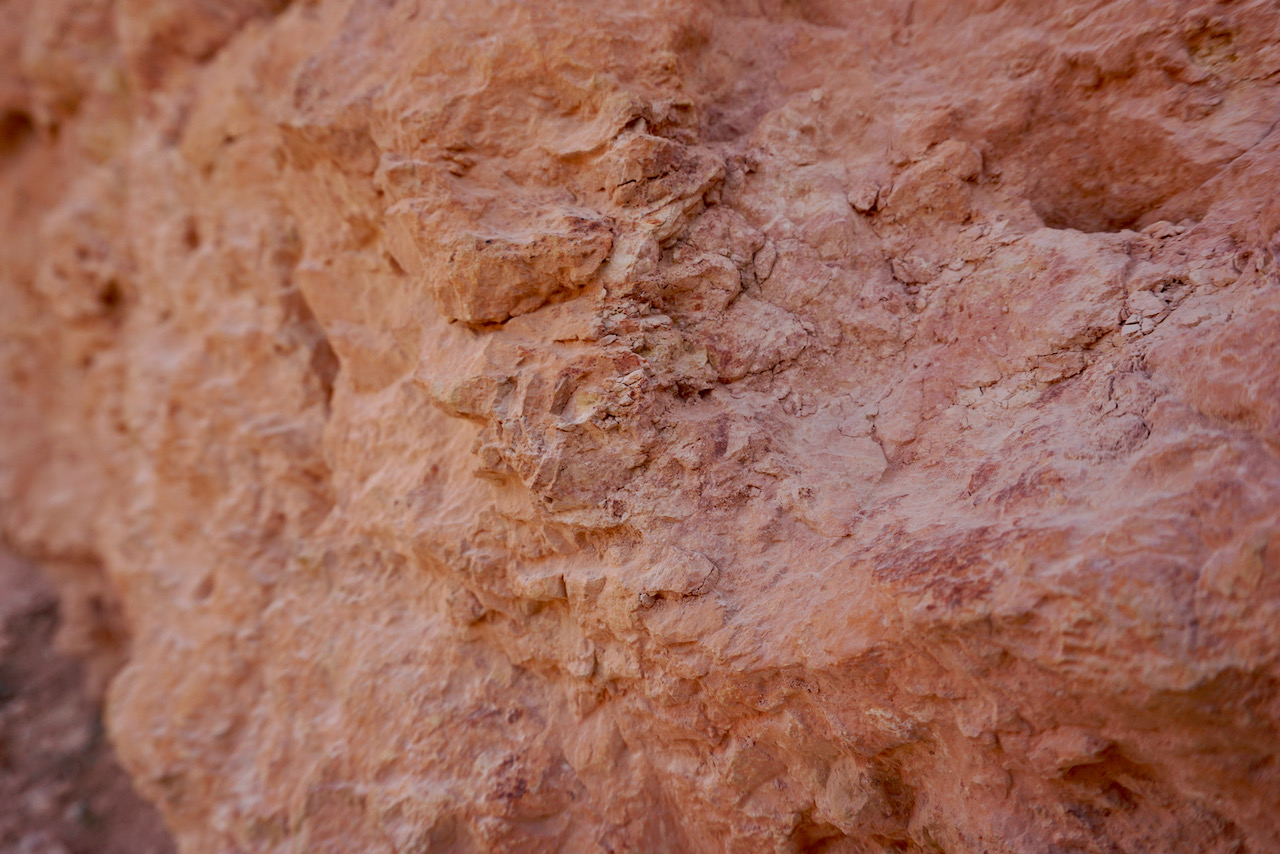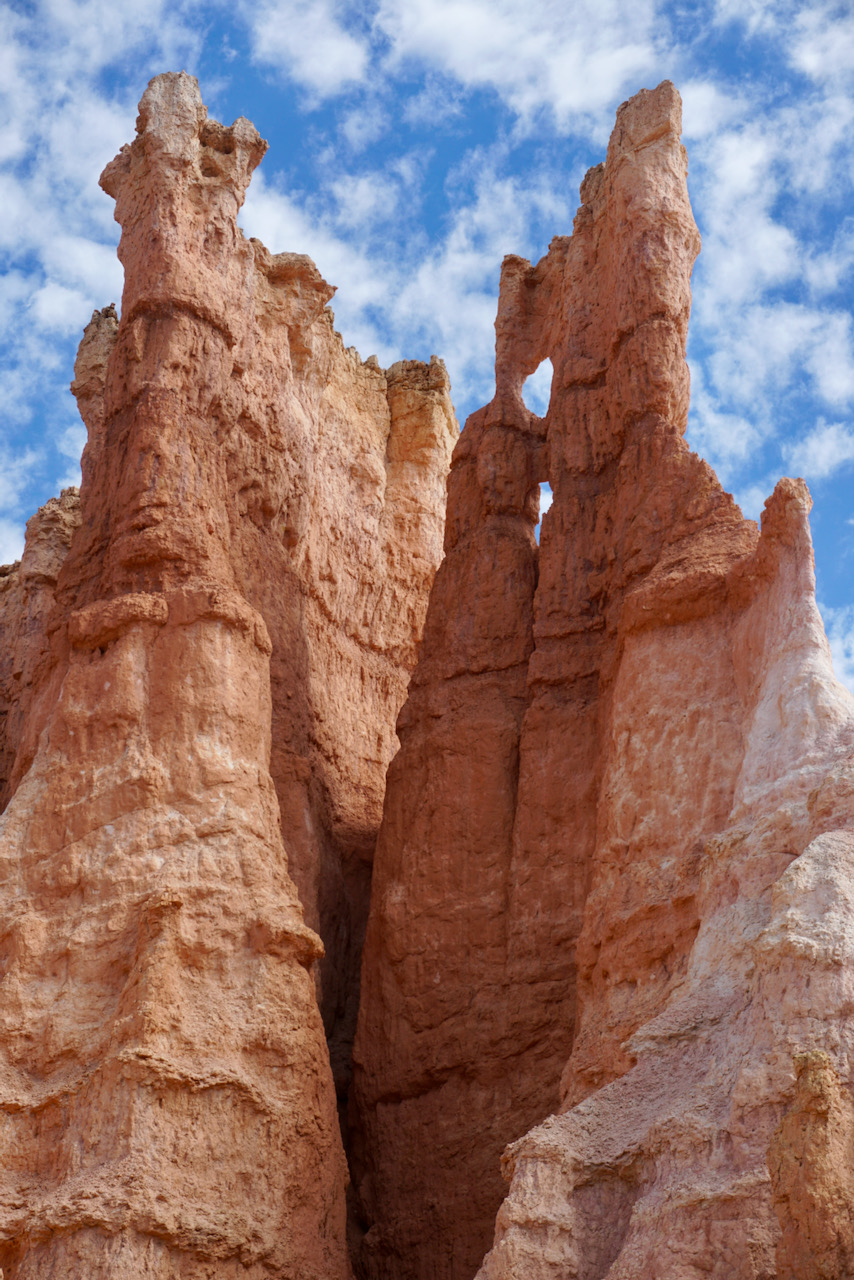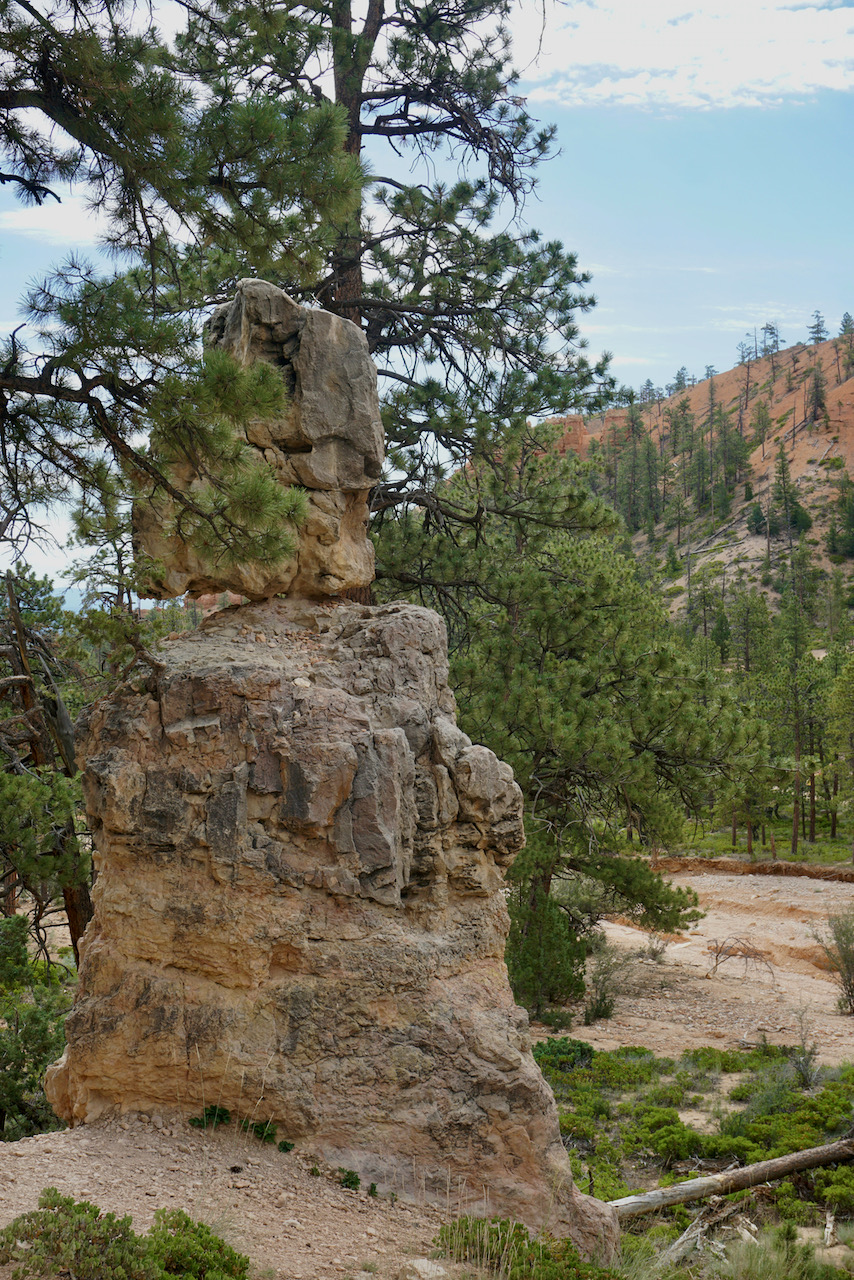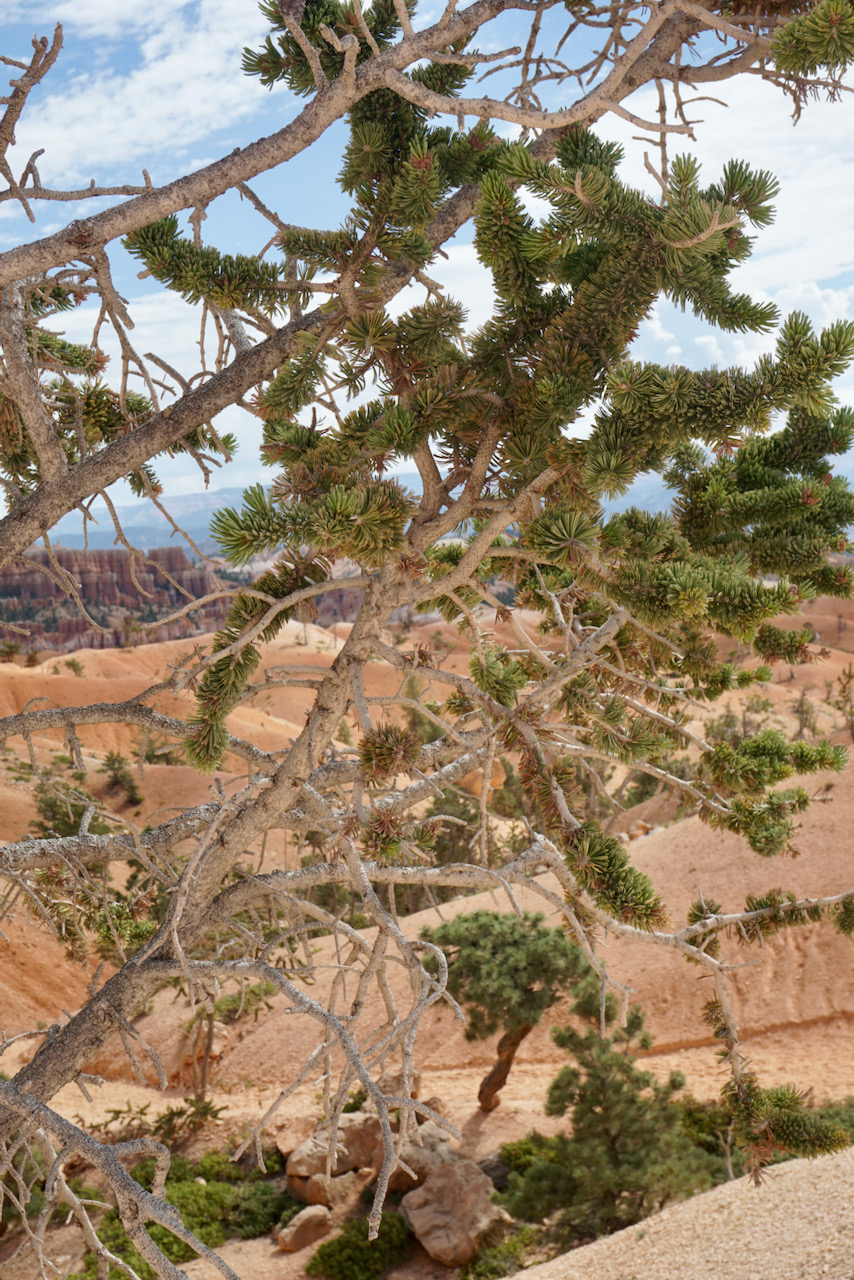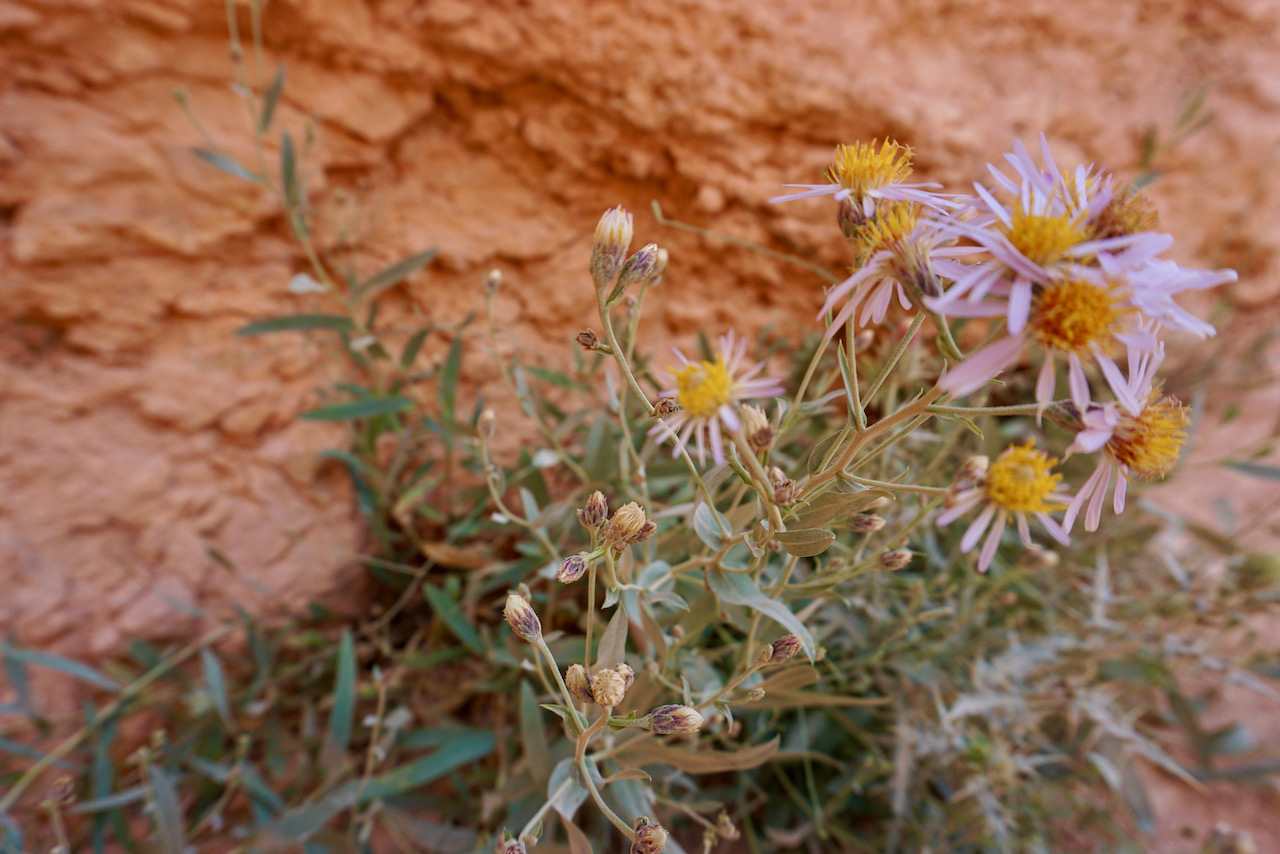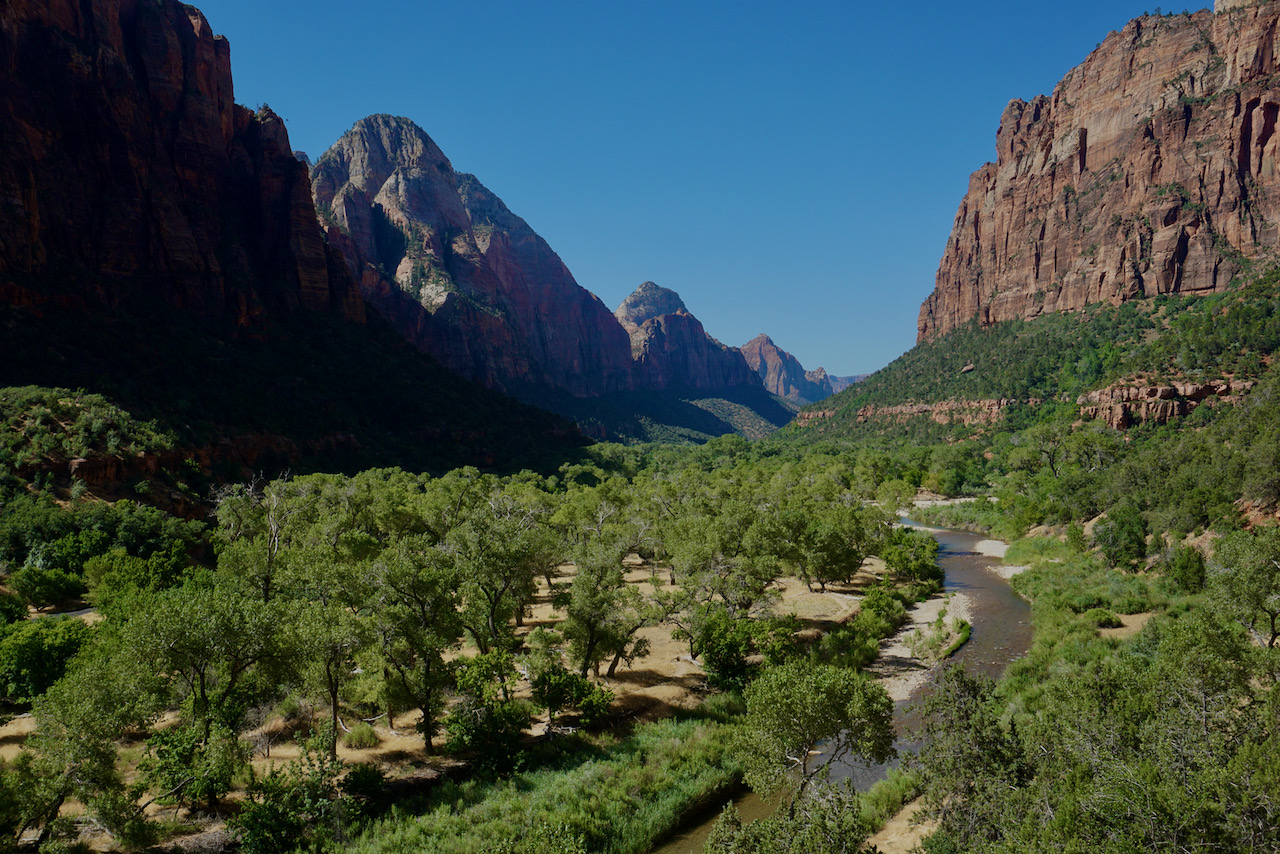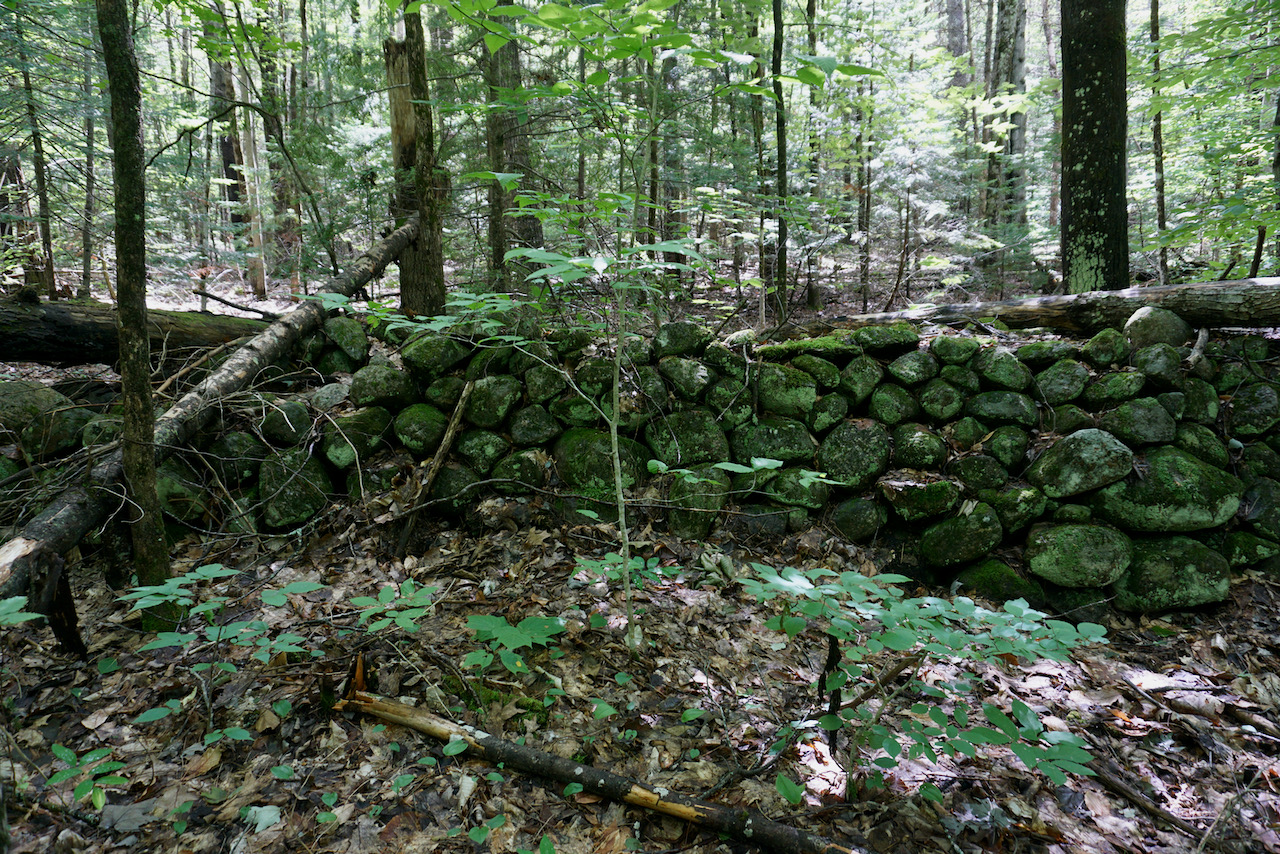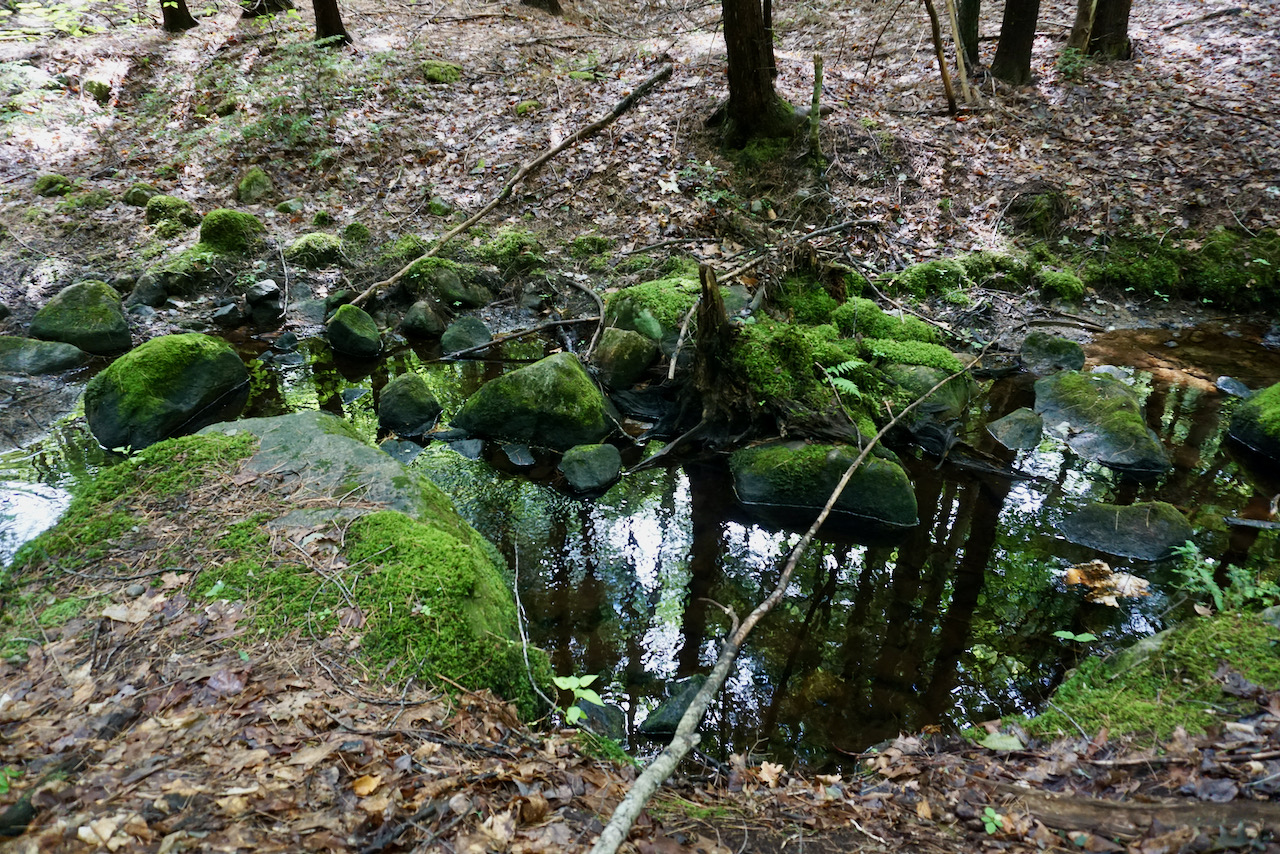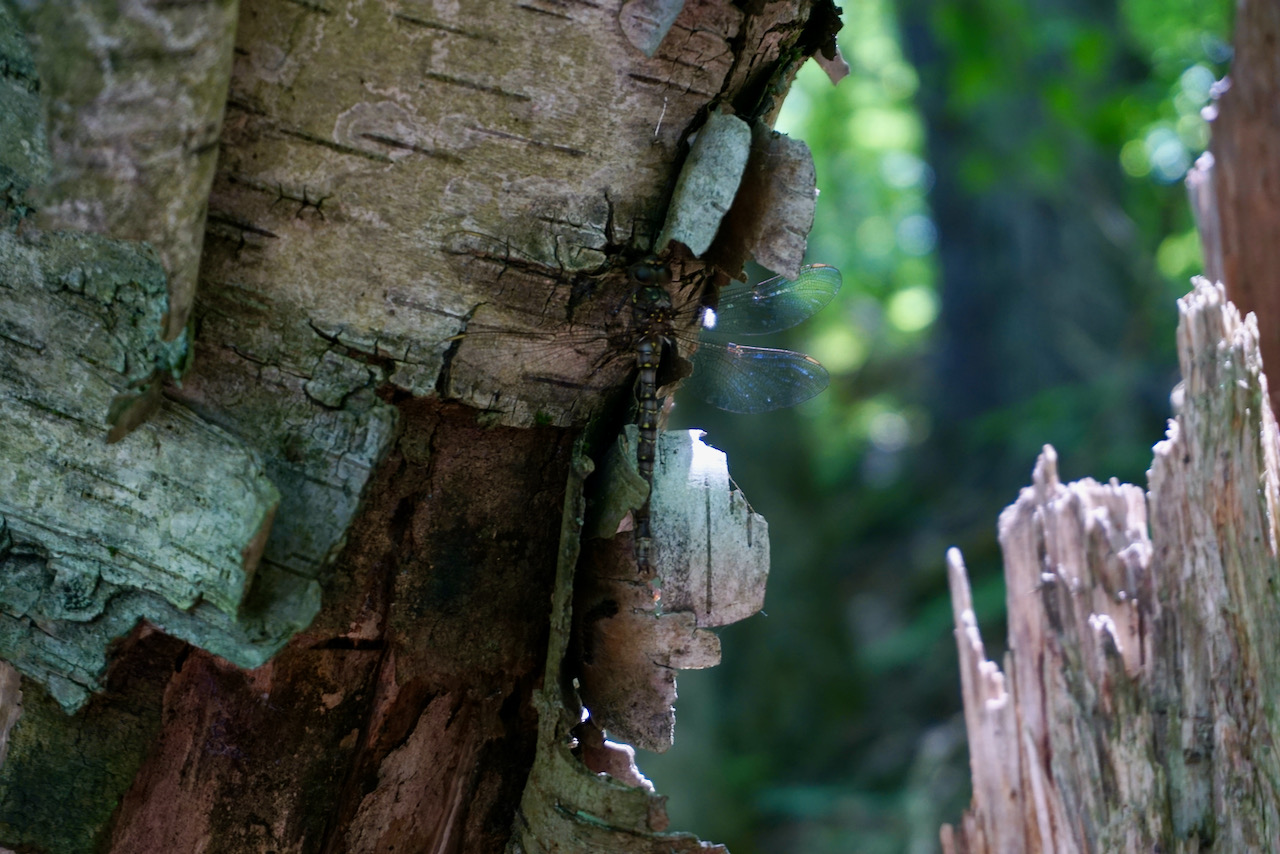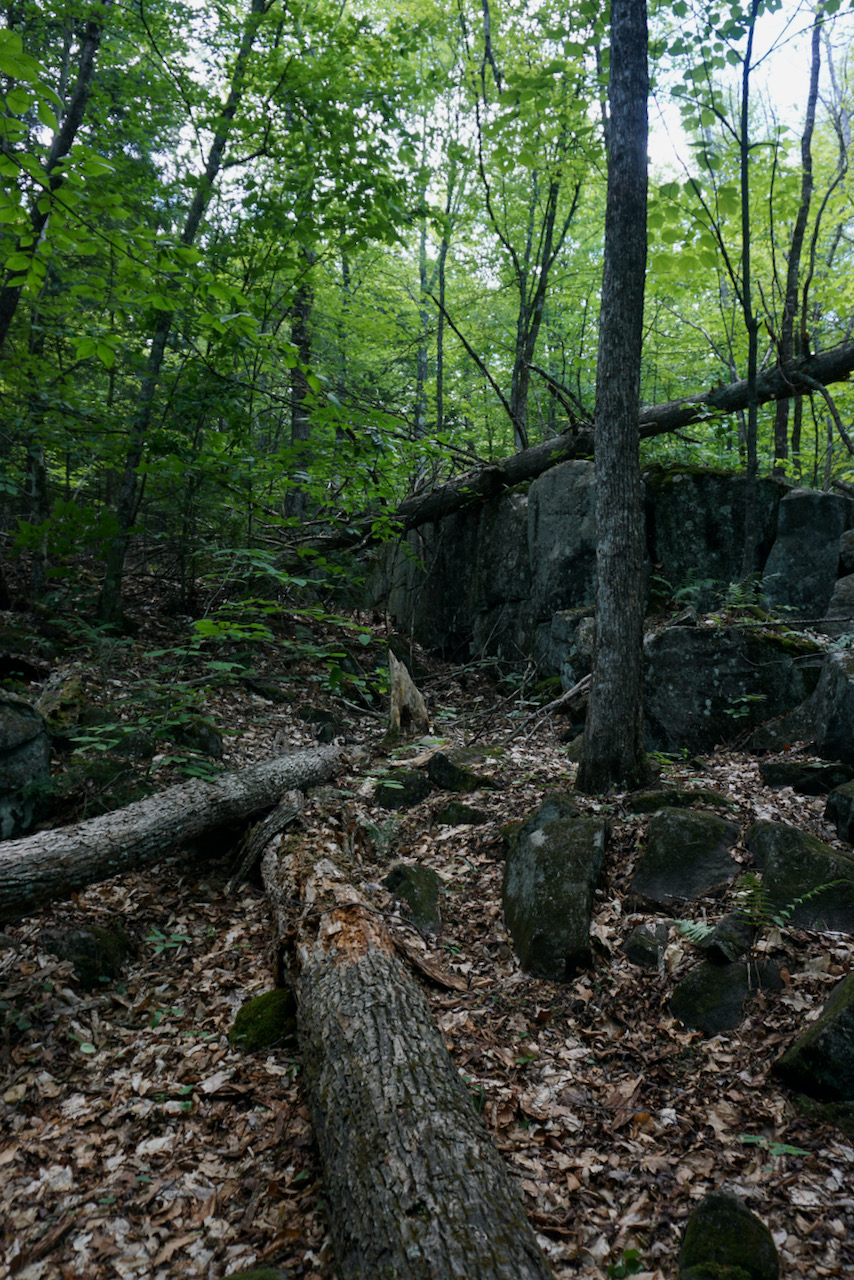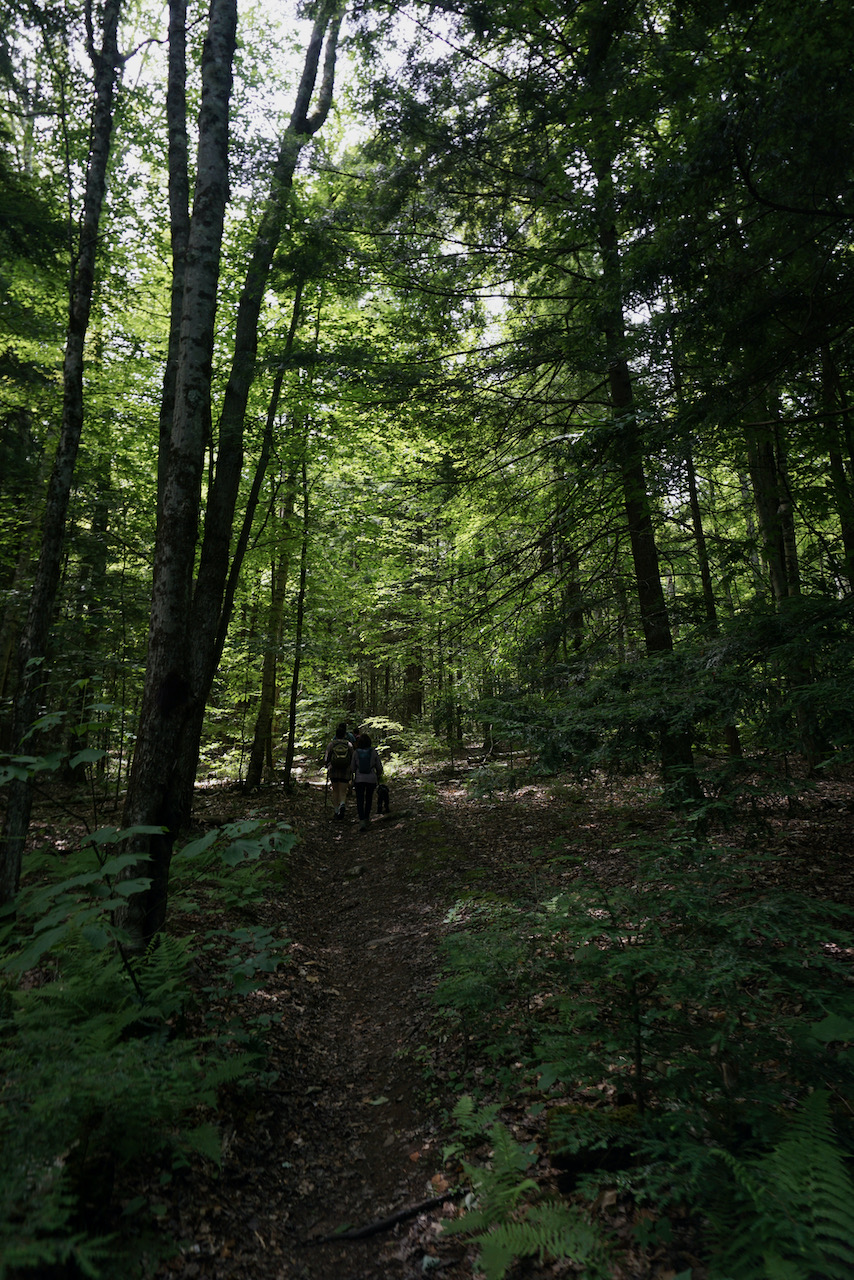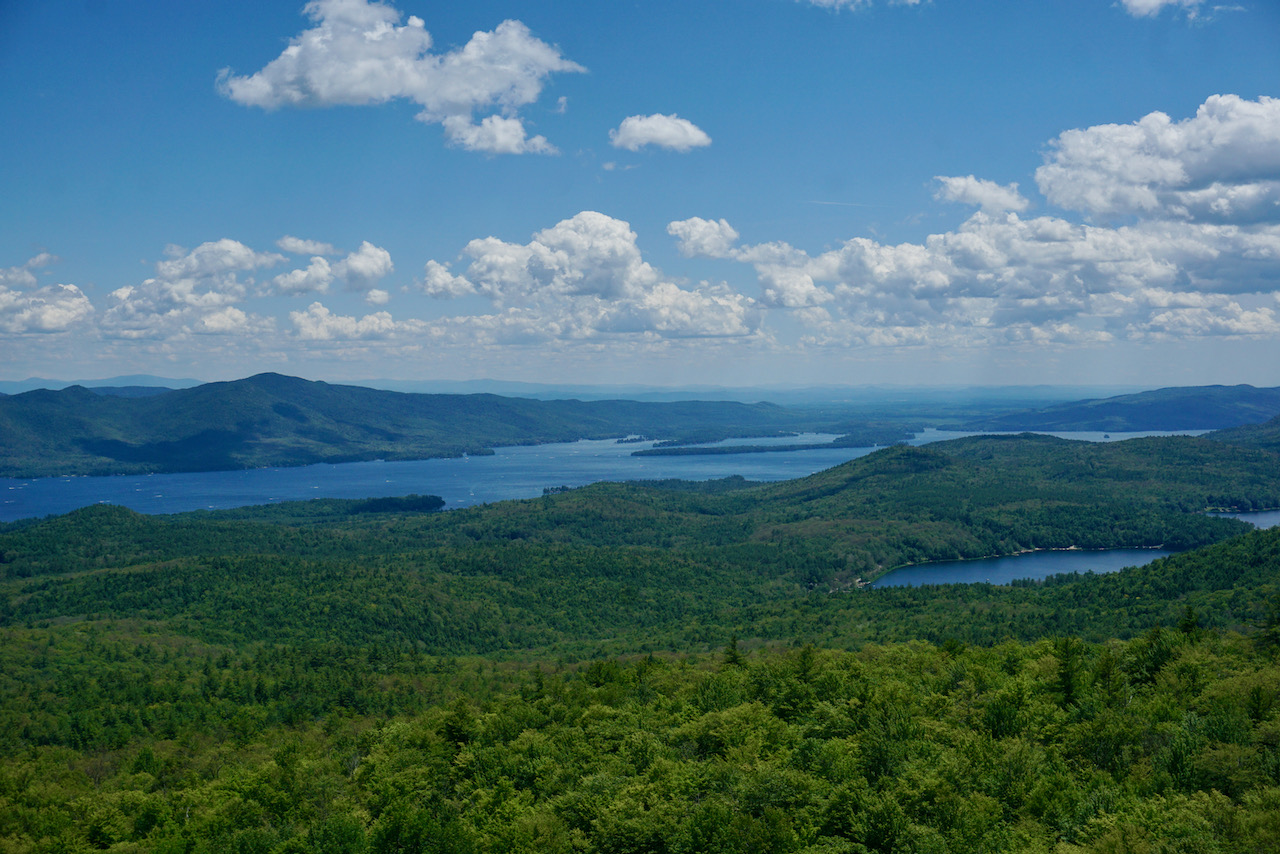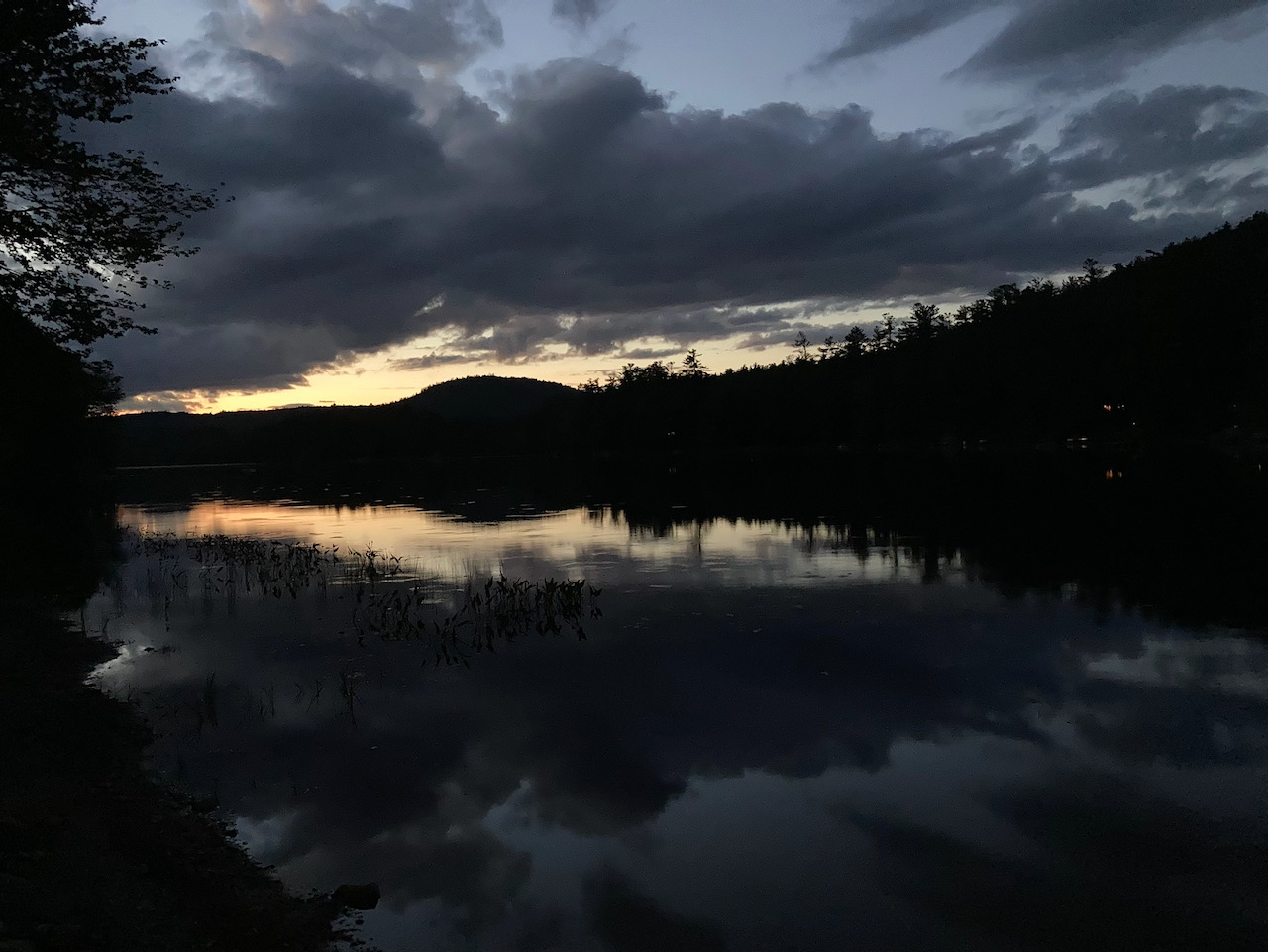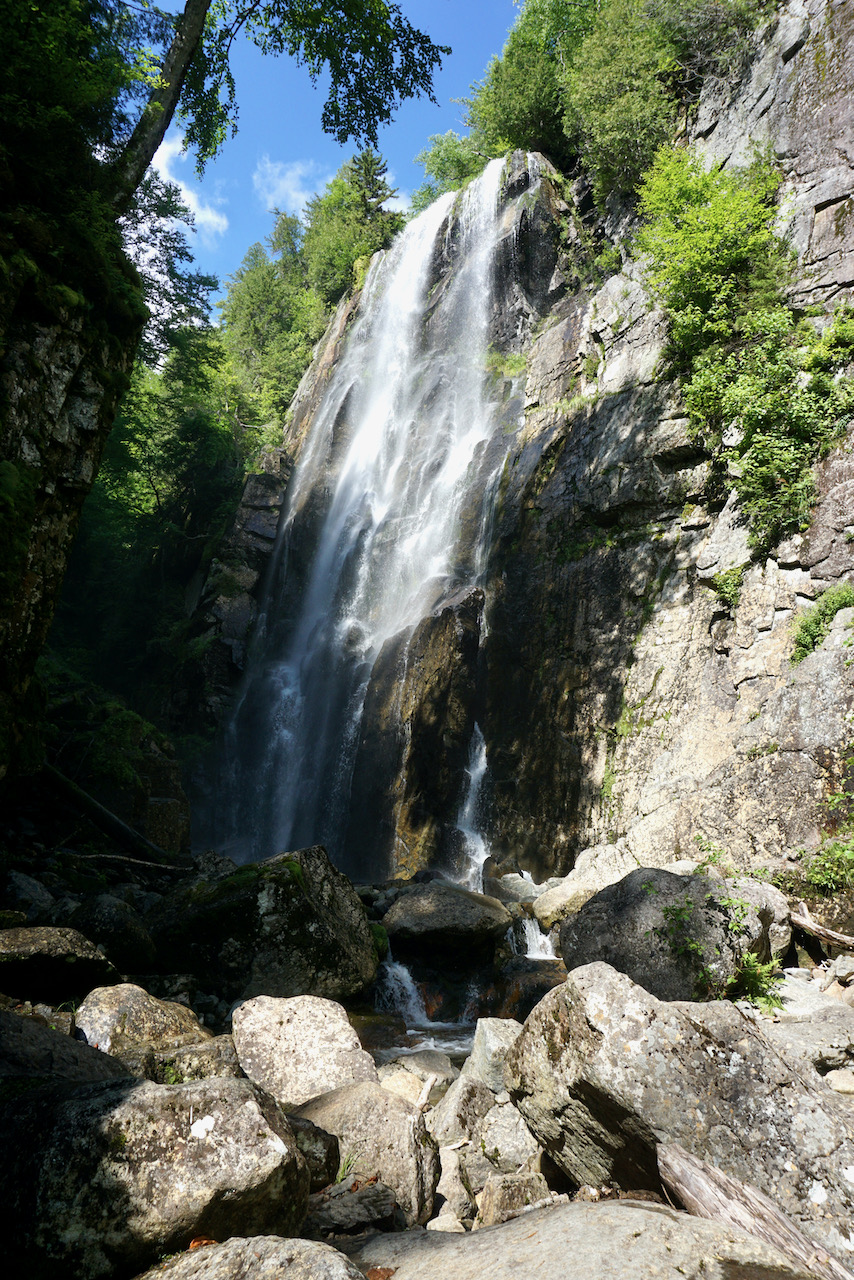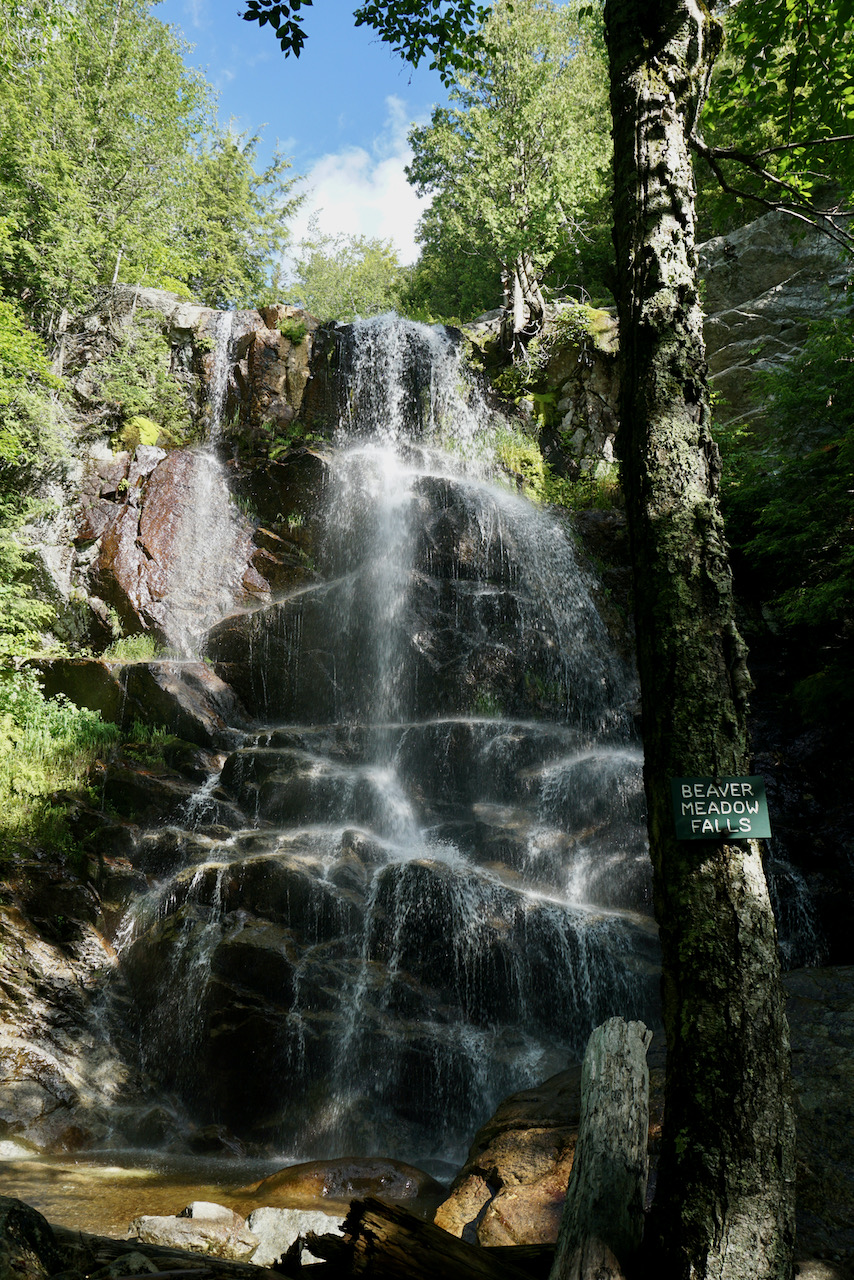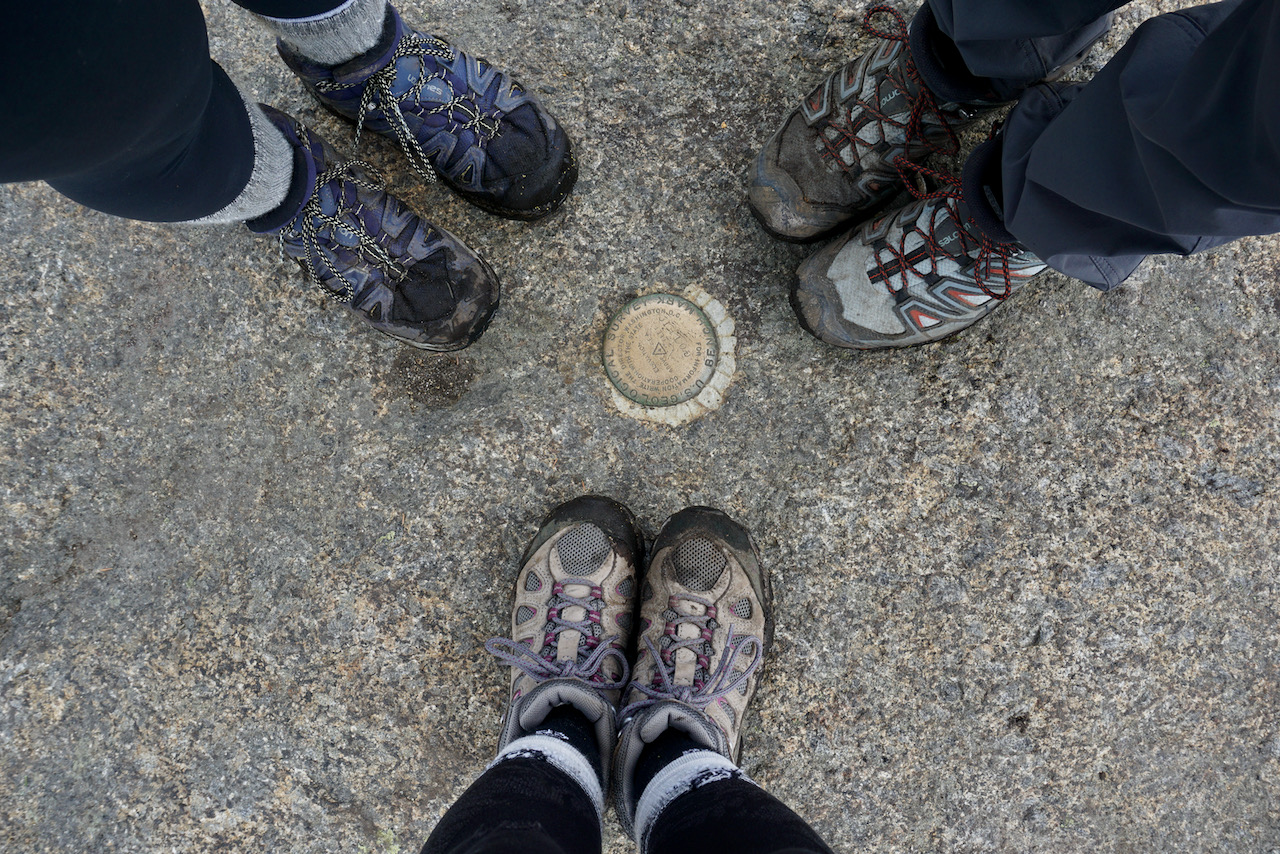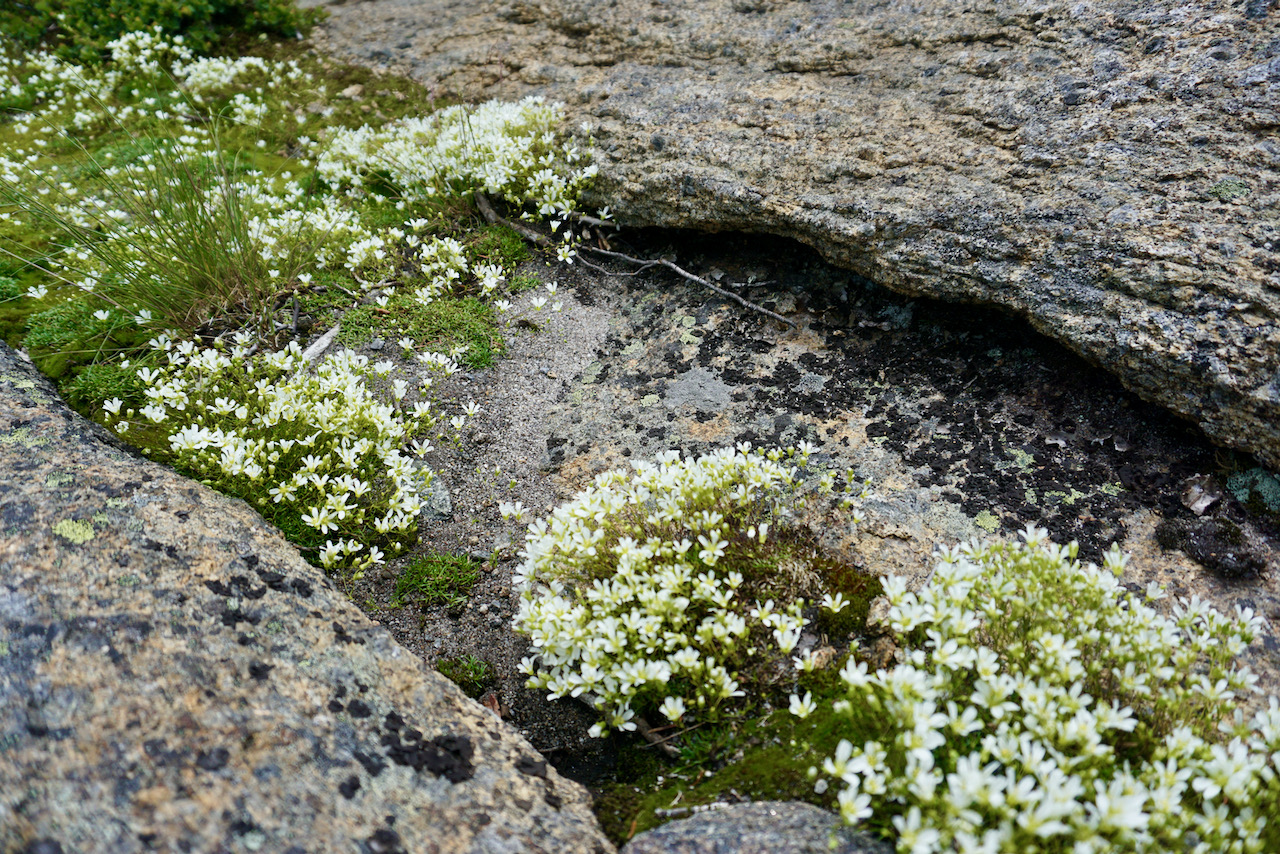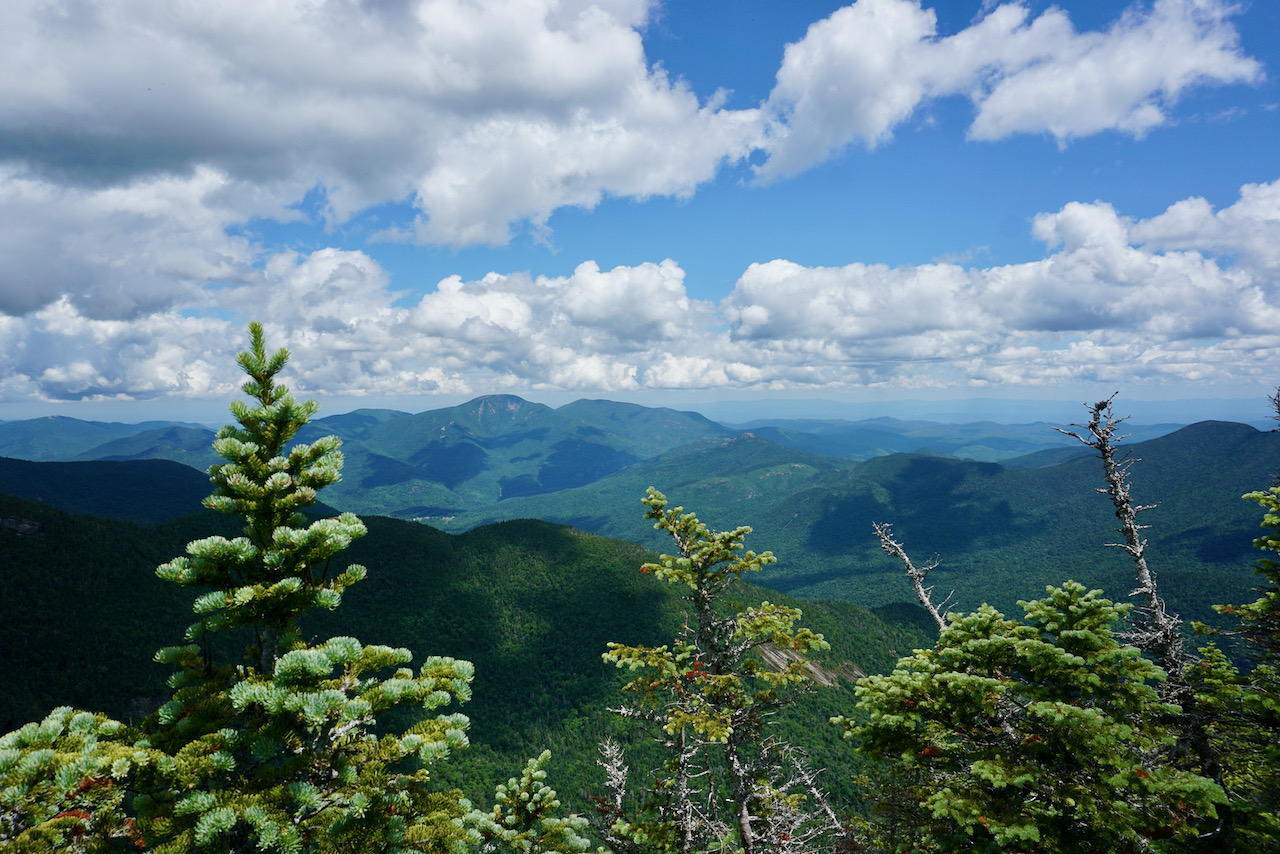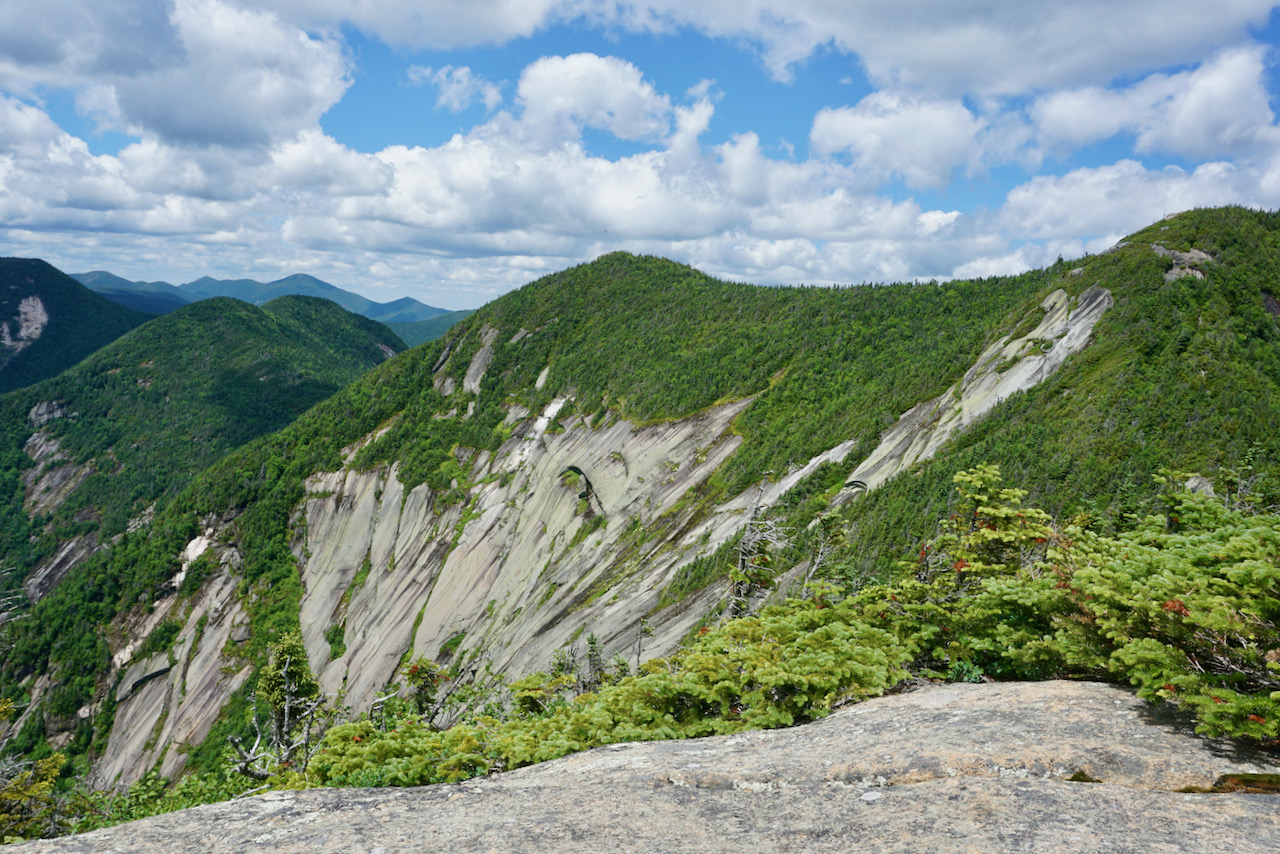We’d been in Arizona since early afternoon, had seen sights, eaten at a diner where we heard a local band, and were getting ready to call it a day when we realized that we’d crossed, hours earlier, into a different time zone.

The shaded parts of Arizona and Nevada on the above map do not observe Daylight Saving Time, remaining instead on Mountain time. This means that Arizona follows Pacific time in the summer. The parts of Arizona that are not shaded are Navajo territory, where they do observe Daylight Saving Time. (Thanks to Wikipedia for helping us out once we noticed that our phones and my wristwatch were keeping different time. Figuring out how to change the time on the GPS took us another day.)
Our drive from southeastern Utah took us through Kaibab National Forest where we saw the effects of forest fire, sometimes stopped only by the road itself. We didn’t know when the fires were, or how many there had been. There were patches where tree trunks were fully blackened, leaves burned away, and patches where black tree trunks were topped with fresh green leaves. We had already seen warnings of fire risk in each of the national parks we visited, and this theme only became more prominent as we drove deeper into the desert.
What is desert? Desert is yellow sand, red and purple rock, vast blue sky, and the straightest roads I’ve ever seen. Roads that stretched beyond the horizon, already impossibly far away, and further than that. The lazy tumbleweeds of the movies actually exist, as do dust devils that you can see in the air long before you reach them, assuming a sudden shift in atmosphere doesn’t blown them away by then. We spent many hours driving through a desert of nowhere, of now here.
It was extraordinary to watch the flatness of this scrubby landscape, populated with yellow grasses and green shrubs, suddenly sprout canyon walls and huge red mesas that stayed with us along the road.
Several times a day, as we passed sign of human activity ranging from clusters of trailers to tiny towns built along the oases created by rivers, my partner commented, “You’re on a journey looking for a new place to live, and you stop here and you look around and you say, ‘Yep, looks great. We’ll stay.’ There’s nothing here. How do people live here?” My contributing comment in response: “And why do they still live here?”
Knowing what I know about the history of American treatment of Native people, it’s entirely plausible that living here was never a choice. And that means it’s also possible that the people who have stayed are here for reasons beyond eking out an income. The reasons the Navajo consider this land holy ground were all around us.
We stopped at Horseshoe Bend in the late afternoon, just outside of Page, Arizona, where we would spend the night. We looked down at the mighty Colorado River, which we had encountered multiple times on our journey, and we watched the clouds move and the sky change.
Although there is a great deal of beauty around Page, we didn’t linger. Instead, we drove in the direction of the Grand Canyon, which is indeed a sight to behold. It is so massive, so huge, and stretches to somewhere very far away. It is unfathomably deep, cavernous, and abutted by mountains in one direction and forest in the other. At lookout after lookout, we exclaimed over the scale, the vastness, and the majesty of sand, wind, water, and time, this wonder called nature.
After a while I stopped taking photos and just looked. There was really nothing to say, no words that could capture the privilege of being there.
Late in the afternoon, following our trip motto of, “Always take the scenic route,” we turned off the main highway to follow:
On Route 66 we found the town of Seligman, with preserved shades of former glory and local people used to welcoming tourists. My partner’s dream of being called “sweetheart” by a diner server was fulfilled, I finally had a veggie burger, and the man in the kitsch/second-hand/antique store gave us markers to sign the wall, like many hundreds of travellers before us. Liebe Grüße aus Weimar!
It took us fully by surprise that the diner where we ate was German-themed, the walls full of license plates, stickers, and other memorabilia. In addition to typical diner offerings (refillable coffee, breakfast all day, pie in a glass fridge by the door) bratwurst was on the menu at Westside Lilo’s Cafe. Based on the reactions of people who walked in the doors, we were the only ones who had just stumbled in, but not the only ones who could read the German and English newspaper clippings on the walls.

After a night in Kingman, Arizona, we drove to the other side of the Grand Canyon to experience the skywalk, which I really wanted to do despite having already paid once for access to nature. But, as with Horseshoe Bend, this was the way in. Here was our opportunity, picture-taking prohibition notwithstanding, to be high up on the rock and look down. Also enjoyable was the obligatory bus stop at another lookout where we scrambled up rocks to the highest point. The sheer size of the Grand Canyon was awesome, in the original sense of the word.
Our next overnight stop was Las Vegas, Nevada, and on the border between Arizona and Nevada, where our car registered 122°F (50°C), we pulled over to walk across the bridge at the Hoover Dam. Not interested in the engineering feat, I was mostly in shock at the heat against the backs of my legs and the fact that my greenstone necklace burned against my skin. No one needs to live in a place that is that hot.

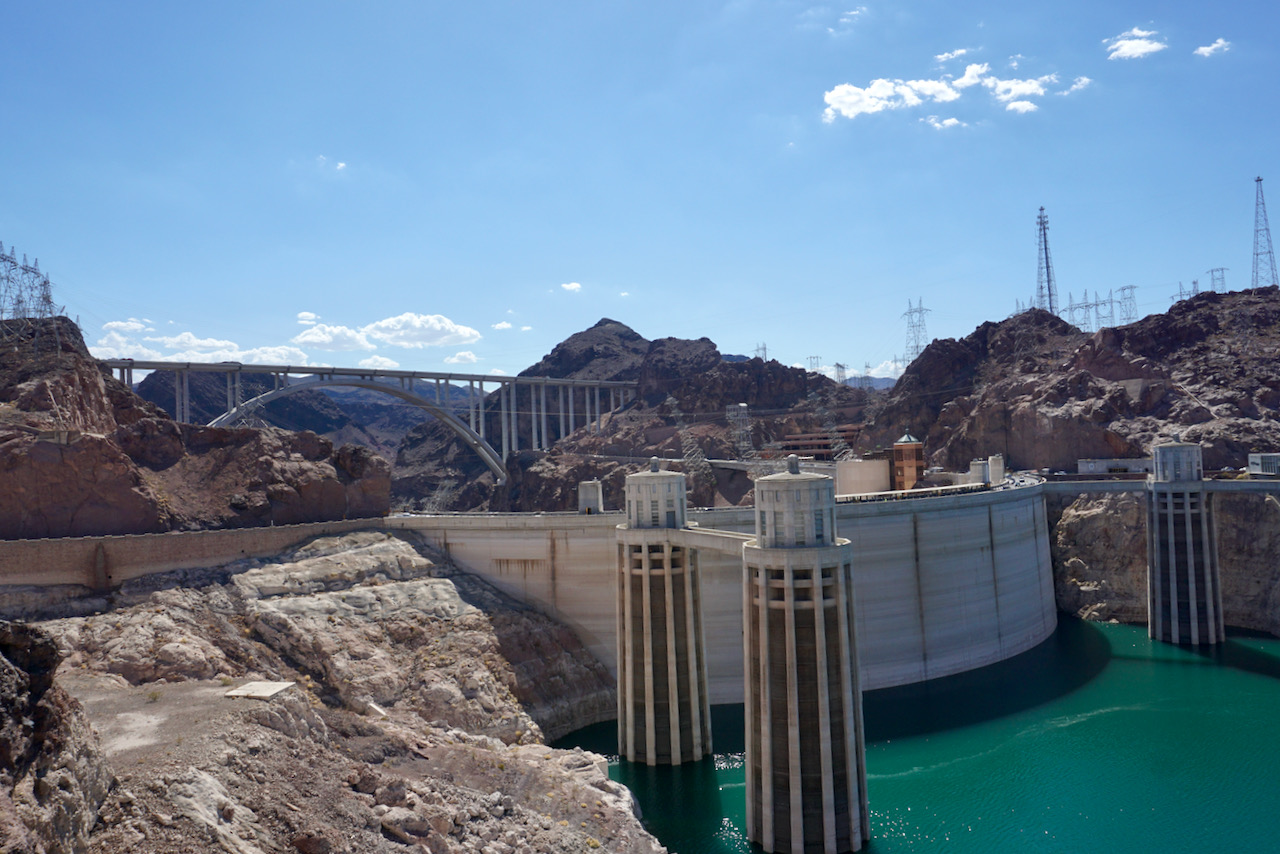
And why people do so is the question we asked ourselves, and later the friend who hosted us in Vegas, as we continued our drive.
I never had any intention of visiting Vegas, but there we were, and having a local tour guide was a lovely experience. We visited the Strip in the afternoon to gawk at the buildings and the people, and returned at night to see the lights and a show, continue gawking at buildings and people, lose a gambling budget of $50 in under two minutes, and take a drive to the “old Vegas” of Freemont Street, glitzy yet cozy under even more lights.
There was so much to look at and it was impossible to stop looking. I’ve lived in big cities and have plenty of experience with glitz, glam, and mazes of shopping malls. After a week of the relative solitude of the desert and intense contact with nature, however, we found the scope and scale of it all a little stressful and overwhelming. I was glad to get back on the road and looking forward to the final part of our trip – California. Coming soon!




